Hunting season is upon us in much of the USA. As many of you make plans to head out on your own adventures, I thought it might be a good time to share a recent experience from earlier this year. Back in February, my wife and I did something completely new to us and travelled to Tajikistan to hunt Mid Asian ibex.
It was a unique hunt and an introduction to an amazing country, culture and some of the most rugged mountains and toughest people i’ve ever encountered. Although this post is long, I think you’ll enjoy reading about our experience, as it was our first time traveling outside the USA to hunt.
I’ve taken my time on this one, as I really wanted to make sure I was representing the experience in the right way. I hope you enjoy my story and the photographs that go along with it. If you want to see larger images, you should be able to click on most of the pictures in the post to enlarge them.
Here is the story:
“You’re going where?” I’ll be honest, up until about 5 years ago, I had never heard of Tajikistan. I certainly had no idea it was such an incredible destination with giant, rugged mountains, amazing wildlife and incredible hunting opportunities. It’s also home to some of the most robust and skilled mountain men I’ve encountered.
Until recently, even as an avid hunter and outdoorsman, I didn’t completely understand the appeal of an international hunt. My perspective on this really changed after seeing the firsthand benefits that the hunter dollars provide to both the communities who rely on them and the animals that have so greatly benefitted from this hunting-as-conservation model. To me, it’s an important part of the story, and was amazing to see first-hand. Aside from that aspect, it also turned out to be one of the most memorable experiences of my life.
There has been a fair amount written about the history of “trophy hunting” in Tajikistan, and I will post a few links at the end of this post for anyone looking to learn a little more about it. It’s a great conservation success story. To briefly summarize, following Tajikistan’s civil war in the 1990s, ammunition and firearms were readily available, but food was not. Naturally, the remote communities turned to mountains to feed themselves. These ‘poachers’ killed off much of their local ungulate population to feed themselves and their families. As a result, ibex populations were threatened throughout their range in the country. Today, a sustainable model has emerged that has allowed people like me to visit this incredible country and fully experience the ruggedness and beauty that it offers, while pursuing incredible game animals like ibex. Now, many of these “poachers” are hunting guides and rangers in these same areas.
It wasn’t until 2020 when a good friend of mine told me that he was going to hunt mid-asian Ibex in Kyrgystan that put this particular trip on my radar. I began researching central Asian hunting trips, and realized that although expensive, ibex hunting was within reach, and seemed to be a fairly ‘affordable’ as far as international hunts go. Due to very unfortunate circumstances, my friend’s trip did not end up happening, but this planted the seed for me to become very interested in planning my own trip to the region.
Our story starts when my wife Dharti and I attended the the Alaska Wild Sheep Foundation banquet in 2022. When we arrived at the banquet, we had no intention of booking an international trip, but when we saw a Tajikistan Mid-Asian Ibex hunt for two hunters on the auction list, we decided that if we could pick it up for the opening bid that we would go for it. To our surprise, when the item came up to the auction block, we were the only bidders were awarded the trip! It was a lot of money for us, but I knew that regardless of how the hunt went, it would be an adventure. We truly had no idea of what we were getting ourselves into, but after discussing the timing with our booking agent, we decided to plan our trip for February of 2024.
Around the World
Traveling from Alaska to Tajikistan is about as far as you can travel and still be on planet earth. It would actually be a shorter distance to travel from Alaska and head to the west across Russia, but all the flights go through the continental US, and head toward the east. We travelled from Anchorage to San Francisco, then from San Francisco to Istanbul and from Istanbul to Dushanbe, Tajikistan over the course of about 72 hours.
After two years of planning and many hours waiting in an airport, we were finally on our way. It took nearly three days for us to reach the capital of Dushanbe. As we sat in the Istanbul airport awaiting our departure to Dushanbe, we received a message from our outfitter letting us know we would have to delay our trip due to a snow storm and avalanche danger on the highway to our destination. In hindsight, I’m glad we had a little extra time to decompress following the long travel schedule. It was an exhausting few days. Thankfully, all our firearms and luggage arrived to Tajikistan without any issues.
After spending a couple nights in our hotel in Dushanbe, we received a message from our outfitter that we were finally going to depart for our trip. We were met at the hotel by a driver and our 21 year old personal guide/interpreter Rasul. He stayed with us the entire trip, and we immediately hit it off with him. When the transport vehicle showed up at the hotel, we were surprised to see that it was just a small Honda CRV to transport four of us and all our gear.
We had a lot of gear, and the only way to fit everything in the vehicle was to strap most of our gear to the roof of the car. To weatherproof the gear on top of the car, the driver wrapped everything in a thin piece of plastic sheeting. I later learned this was a very common way to travel in this area, as we saw dozens of vehicles loaded in a similar way throughout our journey, headed for the Pamir mountains. Before we got into the car, the rear suspension seemed that it was already bottomed out. We laughed and knew we were in for quite an adventure. It reminded me a lot of my early trips in Alaska driving the Dalton Highway with a completely loaded-down Subaru Forester.
From Dushanbe, we followed a winding and very rough highway through the mountains that headed north from the city toward the Kyrgyzstan border. Our expected drive time was about 10 hours from Dushanbe to the village where we planned to stay that night. We left Dushanbe after noon, so we knew it would be well after dark when we arrived at our destination. After about 7 hours on the road, we turned off the main ‘highway’ onto another smaller road where we passed a few more small villages. We couldn’t see the mountains we were heading into, but got the feeling we were surrounded by some massive peaks due to their black silhouettes against the moonlit night sky. As we continued down the road, the villages we passed continued to get smaller and smaller. The paved road eventually turned into a rough gravel and dirt road as it continued farther into the valley.
A few shots of the sights encountered on our drive. It became clear that driving in Tajikistan was probably the most dangerous part of being there. Our driver did well, but all drivers were aggressive, passing at any opportunity and at blind corners.
After a while of driving in the dark, Rasul updated us on our progress. He pointed to one small light we could see farther up the valley and let us know what we were heading to that spot. It looked very far away still, but in the dark it was hard to be sure how far we had to go. The road we were on turned into what resembled a four-wheeler trail and continued to get steeper as we went farther into the valley. As we continued along a series of switchbacks heading into the mountains, I could tell the car was struggling to make it up the hill with the large load. After bottoming the car out and hitting rocks at least a dozen times, we were heading up what seemed to be one final climb before the road leveled off toward our final destination. Suddenly, the car started jerking and a loud grinding noise came from under the hood. We came to a stop and the driver got out to look at the car. Finding nothing wrong, he started the car again and we continued farther up the hill. The same grinding noise happened again, and the car sputtered to a stop. It was just a small climb remaining until we followed a final straight-away to the destination village. The driver started the car once again and we were able to sputter into our destination.
Arrival in Mok, the true adventure begins
We arrived in the village (named Mok, pronounced ‘Mook’) and were immediately greeted by our guide team. They call themselves ‘rangers’, but they are essentially guides, or scouts that go along to help find game. Our head ranger, Asatilla (Asad) welcomed us into his guest home where we were fed turkey stew and tea. Much of the prepared food on the trip came from things grown or raised locally in the village. After dinner, we discussed the following day’s plans for heading into the mountains on our hunt. Using Rasul as our translator, we went through a checklist of gear, making sure we had everything we would need (or so we thought). As we met with the guides, it became clear that there was a stronger language barrier than we anticipated – the locals to the Mok village primarly speak Kyrgyz, the Kyrgystan language and not Tajik as we expected. We learned that many locals were from Kyrgyzstan originally, so this made sense due to our proximity to the border. Unfortunately, we had only downloaded the Tajik language on our Google translator since this is all we thought we would need. The rangers had a limited understanding of the Tajik language, so they would speak the limited amount of Tajik that they knew, and Rasul would translate this to us in English. Certainly, there was some information that was lost along the way, and this came into play later.
We laughed our way through the language barrier and generally were able to communicate what we needed to effectively. Before bed, we made a plan for the following day. We were going to leave the house in the morning, and ride in a jeep-type vehicle for about 7 miles. At the end of the road, we planned to meet a mountain rancher with horses and mules, which we were going to use to get into the hunting area. If there were enough horses available, we would ride on the horses. If there were not enough horses available, then I would walk part of the way while Dharti rode, and I would walk the first part of what was supposed to be about a 9-mile pack-in to what sounded like a wall tent. It seemed straightforward at the time.
Departing the village, Heading Deeper into the Mountains
The following morning, we woke up and were greeted by our guide team who fixed us a breakfast of eggs and sausages. We also had tea and cookies (which went along with almost every meal), and nobody seemed to be in a hurry. Our very accommodating hosts insisted we hang out and enjoy our breakfast while they loaded the vehicle with our gear. After the gear was loaded, we packed into a small, old jeep-like vehicle. We sat three across the front seat, and three packed into the back seat. We made it only a short distance down the road when we stopped and picked up another ranger who squeezed into the back seat as well. With another guide, there were now seven people crammed into the car! We all laughed together as the jeep bounced down the road into rougher and rougher territory. The road became almost unrecognizable as a road in parts, and the adventure continued to build.
The weather was beautiful, it was in the upper 20’s to low 30’s (Fahrenheit), sunny and gorgeous. In the daylight, we were able to get a greater appreciation for the mountains around us. The peaks were massive! There was actually very little snow on the ground in the center of the valley, which was unusual for this area at that time of year. The mountains reminded me of some of the roughest mountain goat country I’ve seen in Alaska, and I knew at that point we were in for a true mountain hunt. We stopped several times as we drove to refill the coolant reservoir of the vehicle with water. We finally came to another small cluster of houses where we stopped to top off the ‘coolant’ one more time. To our surprise, we were actually picking up one more person, so a fifth passenger joined the rear seat. We couldn’t stop laughing as we continued down the road with 8 people in the car. I felt that we bonded well with the guide team over this experience, and I think they understood we were there for a good time and loving every moment. The car ride was certainly a great ice breaker for us.
Now with our guide team fully assembled, we headed deeper into the mountains. We climbed higher and higher as we went deeper into the valley. We finally caught a glimpse of the beautiful turquoise river at the bottom of the valley. It reminded me a lot of the color of the upper Kenai river in Alaska due to its glacial headwaters. The jeep came to a stop at a foot bridge at the end of the road. Clearly, this had to be the place where we would leave the vehicle behind and begin our walk. Half of our guide team unloaded the jeep while the other half helped me check zero on our rifles. I was happy with the way both rifles shot (we brought a 6.5 PRC and a 7mm-08 Remington on this trip), so we headed back to join the guides loading our gear. By the time we returned to the Jeep, two mules had joined along with a gentleman who lived up in the mountains. Asad arrived shortly after with one horse.
Making a few final preparations and checking zero on the rifles before crossing the footbridge to start our climb into ibex country.
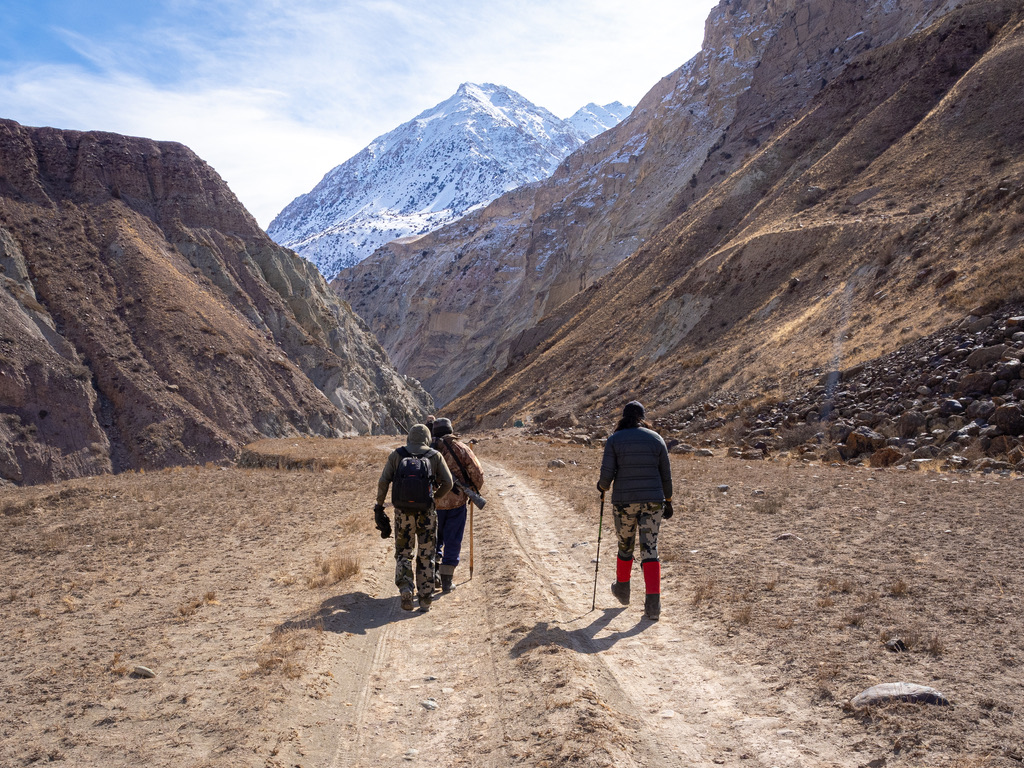

After crossing the cool wooden foot bridge, we started to climb. A narrow trial switchbacked up the hillside into the high valley above. After a short distance, Asad caught up to us with one horse and offered Dharti a ride. I continued on foot. When we reached the top of the plateau, we were amazed to see another set of small buildings up ahead. It looked like another small village. The valley opened to a high grassy plateau that extended for many miles. We could see cattle surrounding the buildings and it was obvious there were people living up there as well.
Earlier in the day, Rasul told us about another guide company that would be hunting an area near us, and that we had to walk through their area to get to ours. We ran into the guides for the other company while we walked toward this new village. After Rasul and our guides had a brief discussion with the other company, it sounded like their hunter had still not found an ibex. We wished them well and continued on our way.
As we walked along this plateau, we saw foundations of many other buildings all around us. Rasul told us that there once was a much larger village there, but most of those foundations were probably 100 years old or more. He said there was now just one man and his wife that lived in this valley, and they raised livestock which grazed there. We were going to go to their guest house for lunch. We thought we were going to be walking much farther that day, but we learned that we were going to stay in that guest house for the night instead.
We were welcomed in by the couple who owned the house and they were very accommodating (a common theme in that part of the world). The man of the house, named Khayrullo, was our muleskinner (a person who cares for and transports people/gear with their mules). Without the help of him and his mules, the trip would not have been possible.
The couple offered us tea and bread and our guides broke out some packages of cookies they brought with them. They then served us some yak stew, then I learned they had a large group of yaks which grazed on the plateau around their home. We were happy to have a bit of a break, as it had already been a long day of hiking. It was early afternoon. We had nothing to eat or drink since leaving Mok that morning, so we were very hungry and thirsty. We learned quickly that these guides only were interested in eating and drinking about three times per day, something that our American bodies were not prepared for.
There was still a lot of daylight left, so after our lunch I went out to glass the nearby hillsides with our guide Tashtan while Dharti and the rest of the guides took naps in the guest house. To my surprise, we spotted a group of ibex on the hillside on the other side of the river! We look for a while, and Tashtan informs me that these are not in our hunt area, and that only one of the ibex is legal anyway (ibex must be 7 years old to be legal in Tajikistan). It was great to finally lay our eyes on some ibex, even if they weren’t in our hunt area. After her nap, Dharti came out to take a look as well.
Top Left: The guest house where we rested and spent the night. Bottom Right: Dharti looking at the first ibex sighting through the spotting scope.
Rasul came out to explain to me where our hunt area started, and he pointed to a valley across the river. I think I was confused as to where he was explaining, because it didn’t seem all that far away. After Rasul and the rest of the guides discussed amongst themselves a plan, he told me that the plan was to leave early on foot the next day. By early, they meant we would leave at 2:30 am and walk in the dark to avoid spooking these ibex for the other guide company.
We were OK with leaving that early out of respect for the other guide company, but had no idea how far we were actually going to have to walk in the dark. Rasul informed us the night before that if we got an ibex by 2:00 pm that we would be coming back to this house for the night, otherwise we might have to spend the night out on the mountain. When preparing for the trip, I was told there was a chance we would have to spike out for the night, so I should bring an ultralight tarp with me. I elected to bring the outer shell of my Hilleberg tent, which would be a little more comfortable than an ultralight tarp in these conditions, but still light enough to carry around all day. To our understanding, we were going to be in a type of ‘wall tent’ when we got to our hunting area, so we didn’t bring a lot of extra gear with us. Our tent was more of a ‘just in case’ item, at least from what we could tell.
I’ve often heard people explain that when doing an international hunt, it should be expected that things may not always go as planned, and it’s important to be flexible and go with the flow. It was at this point of the trip where I started to understand what people meant by that.
Day 1: A 15 Hour Walk
Although we had been traveling for several days already, I would consider this the actual ‘first day’ of the hunt. Finally, after a very early breakfast, we were heading into ibex country that we were allowed to hunt. As discussed the night before, we left the house at 2:30 AM and started walking in the dark.
We followed the guides, who advised us not to use headlamps to avoid spooking the ibex in the distance. In the darkness, Dharti found a patch of ice and fell hard after just a few hundred yards of walking. Luckily, she was OK, but it was a scary moment. We continued walking, carrying fairly heavy packs in a dimly moonlit darkness. The air was still and the sky was clear. It was definitely cold, probably in the upper teens. The walk was primarily flat for the first mile or two, then we started to descend a series of switchbacks into a canyon. Still in the dark, we could tell the trail was narrow and Rasul told us we could use our headlamps now. We were walking for several hours, and still not sure where we were going, or how far it was going to be.
Daylight started to break, and I could see we were getting close to the river at the bottom of the valley. When we arrived at the river, our muleskinner host wasn’t far behind us with a pair of mules carrying the remainder of our gear. Thinking there was still a chance we would return to his guest house that evening, we didn’t see a reason to bring a lot of extra food and left it back at his place. We were, after all, hoping to be back there that evening anyway.
The guides started a fire, and Rasul told us we were going to have breakfast before going farther. We were ready for a break, since we had easily walked over 5 miles already including some steep up-and-down sections. I went down to look at the river. It was fairly shallow, but quite swift. I asked Rasul how we crossed, he pointed to a bridge a little bit upstream from us. I went to look at the ‘bridge’ – it was a steel cable with a little cart on it and a rope to pull it across. At that point, it became clear that the mule train was not going to be coming with us. Everything from that point forward had to be carried on foot. Rasul told us our hunt area is in the next drainage. Looking ahead, it didn’t seem all that far. Over breakfast there seemed to be a lot of disagreement between Rasul and the other guides.
After breakfast, we shuttled all gear and people across the river. Had we known we were going to be walking this far, we would have packed differently. I guess this is all part of the experience, but the language barrier started to lead to some issues for us. After crossing the river, we are looking straight-up a hillside that is very steep for about 600 feet before it appeared to level out. There was a well-worn foot trail to follow up the hillside.
The guides offered to carry our packs, but they were already carrying such giant awkward loads that I didn’t want them to take anything else. They were carrying the duffel bag we used to travel from the US, in addition to their packs, which were empty grain/rice bags with straps sewed to them.
We got to the top of the first steep section after leaving the river and begin side-hilling along the hillside above. Rasul pointed out some fresh snow leopard tracks along our trail. That was exciting, since catching a glimpse of a snow leopard was high on our wish list. After side hilling and climbing for another mile, we came to a canyon with a large avalanche slide in the middle. With Asad leading the way, we picked a route across the slide and up the other side of the canyon. There was enough snow that Asad had to carve out foot-holds in the snow for us to get up the other side. I was amazed at how much these guys could do in their rubber boots while were struggling to keep up in our mountaineering boots.
After another mile or so, we crossed another large, deep canyon. This one had less snow and was easier to get across. I actually thought this was the valley Rasul was pointing to earlier, and I was under the impression at that point that our hunt area started there. We continue walking a little farther, and in the distance I saw an empty metal-framed structure. Next to the structure was another rectangular, smaller structure with a pile of gear cached on top of it and wrapped in tarps. I thought for sure this was the ‘wall tent’ we were staying in. Very exciting to finally be there after so many miles.
Asad motioned for me to join him and head to a small glassing knob, while the others continued toward the tent structures. From the glassing knob, we found a couple groups of small ibex nearby. Asad then pointed me to a group of larger animals on the hillside just above our camp. I looked through the spotting scope, and it appeared there were multiple legal ibex in the group. We collected our gear and headed down toward the wall tent structures to meet the others. It appeared the others were preparing to setup camp, pulling gear from the top of the cache when we arrived. At that point, I thought we were in our hunt area and that we had just found some legal ibex. A seemingly heated discussion broke out amongst the guides.
As we waited for the guides to sort things out, we couldn’t help but wonder what they were arguing about. It became clear after a few minutes that they were likely arguing about the hunt area. To our disappointment, Rasul informed us that we were not yet in our hunt area, and we had to keep walking. At that point, it was already early afternoon. We asked how far we had to go and Rasul pointed to a valley that was still miles away. Disappointed, tired and somewhat confused, we prepared to continue walking. From that point, it was clear that getting an ibex by 2:00pm was impossible, and that we were going to be heading deeper into the mountains.
When it appeared that the guides were preparing to setup camp, they were just grabbing gear for a spike camp. Now, the heavy awkward loads the guides were carrying were even heavier and more awkward.
Shortly after leaving the wall tent site, we stopped for lunch. I was constantly impressed by how quickly the guides were able to build a fire. They heated water and we had tea and cookies. We were starting to learn that the guides didn’t drink water or eat snacks while hiking. They only eat and drink three times per day. From that point forward, we knew we needed to take our own breaks when needed. These guys seemed to survive on almost zero water and were obviously well acclimated to this elevation. We were not, and were starting to fade after nearly 12 hours on the trail.
From our position, we could see a narrow foot trail that worked its way up to the top of a tall ridge before disappearing into a seemingly giant canyon several miles away. Rasul once again pointed to our hunt area, now It became clear that we were going all the way to that giant canyon. It was a mental struggle to keep going at that point, especially since we were walking past a group of legal, stalkable ibex. They were not in our allotted hunt area, however, so we had to keep pushing forward.
After lunch, we started working up the ridge toward our hunt area. We gained another 400-500 feet of elevation over the next hour and the temperature started to drop as we climbed higher in the mountains. We kept our heads down and continued pushing along.
We made it about two-thirds of the way to the ridge top when the guides started yelling: “Qal’a-yak, qal’a-yak !” they shouted, while pointing toward the creek bottom. We had no idea what was going on, but Rasul immediately dropped down and started digging his camera out –he then told us it was a snow leopard! (apparently, what the other guides were yelling means snow leopard in Tajik). We saw one leopard cross a small finger ridge below us about 400 yards away, then a few moments later a second snow leopard followed in its path. The second snow leopard stopped for just a moment and looked back at us, and Rasul was quick with his camera to snap a picture of the leopard. We could see a bloody patch in the snow where the snow leopards came from, and we must have spooked them off an ibex kill site. Due to the time of year and being snow leopard mating season, the guides thought it was likely we saw a male following a female snow leopard.
Not only was that an amazing, lucky encounter, but it really helped boost morale at that point in our day. To make it even more incredible, Rasul’s pictures turned out great and he was kind enough to send them to me after our trip.
It was cool to see the locals get so excited over the sighting, so we knew we had seen something special. Asad later disclosed to us that he has only seen maybe 10 sightings of snow leopards with all the time he has spent in these particular mountains. The sighting provided the adrenaline boost we needed to continue to push forward.
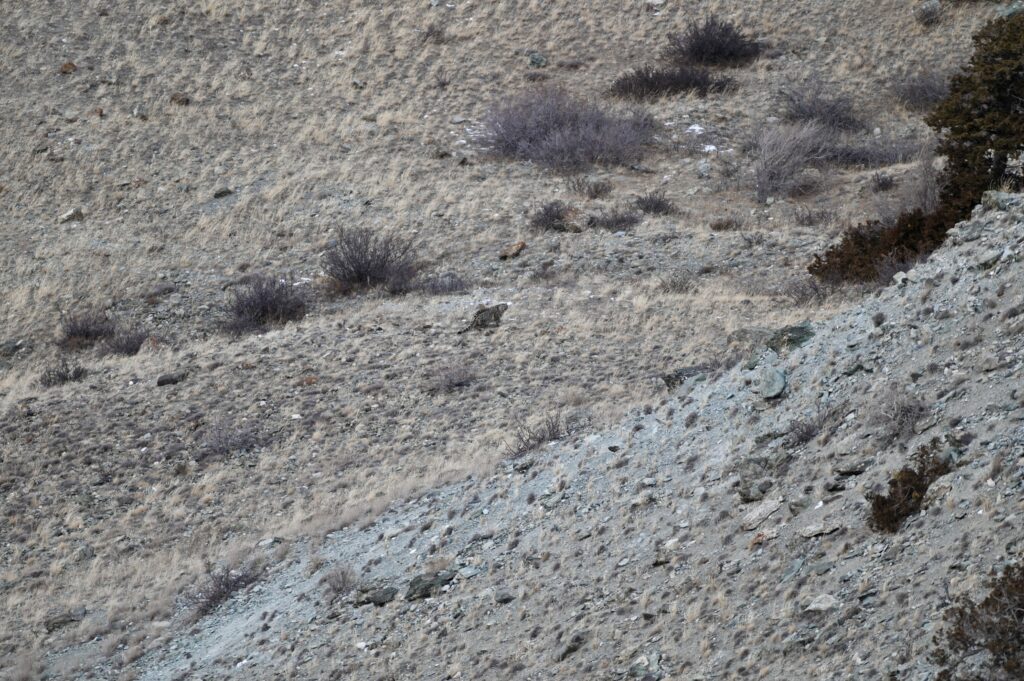
As we reached the top of the ridge, the terrain flattened a bit and we were able to find a nice low spot where we could get out of the wind, get some water and take a rest. Rasul stayed with us, and the others continued on to take a look into the valley ahead. After a short rest, we started to head toward the others to meet at their glassing vantage. We joined them and sat down for a moment. There was a stiff breeze, and the sun was now behind the mountain peaks, making it feel very cold to sit motionless. We put our glassing layers on and sat down to take a look into the valley. Rasul informed us that this valley was finally in our legal hunt area!
At first it seemed like the valley was empty. After just 5 minutes or so, however, one of the guides motioned to me to look up the valley where there was a nanny standing about 200 yards from us on a large boulder. A short while later, a billy walked into view just below the boulder.
To me, the billy looked huge! The guides urged me to get into position to get ready to shoot. I crawled downhill a few yards to get a clear view and setup for the shot. Oyatilla whispers the Halal blessing to me as I walk by – ‘Bismillah Allahu Akbar’, and let me know I needed to say that before I shoot so they can eat the meat. (They are muslim, and this makes the meat halal for them to consume)
I remained in a prone position and waited for the billy to take a couple more steps forward. I still hadn’t gotten the go-ahead from Rasul who was studying him from behind me as well. The billy finally took a couple steps forward and presented me with a shot opportunity, I glanced back toward Rasul to have him say ‘Don’t shoot!’; it’s too small. He thought it was either 6 or 7 years old, but it was not big enough in his opinion. It was not worth making a mistake and taking a young billy. I couldn’t have agreed more. We let him walk.
Once the adrenaline from that excitement wore off, I realized how cold it was and that I had started shivering a while before. Dharti was frozen as she was still in her hike-in clothes and was too afraid to move to put on a down jacket in fear of spooking the ibex while I was setting up to shoot. We finally added a couple layers, and were more than happy to get moving again. Looking ahead, we couldn’t see an easy way down to the valley bottom, but we were being told our campsite was at the very bottom of the valley. In addition to the steepness, there was at least 12” of snow on the ground and it made footing fairly difficult.
We made our way down the hillside toward the bottom of the valley, closely following the trail the guides made for us in the snow. As we crawled farther down into the bottom of the canyon, we began to wonder how we would ever get out of there. Some sections we were sliding down on our butts while holding on to the brush with both hands to slow our descent.
We finally reached the bottom and crossed a beautiful glacial stream, then continued up the stream another few hundred yards before arriving at a flat campsite nestled in a patch of trees on the side of the creek. We were thankful to be finished hiking for the day. By the time we reached camp it was after 5:00 pm.
Dharti hung back at camp while the crew prepared the campsite and built a fire. I went out with Asad and Rasul and we glassed across the valley for ibex. We quickly spotted a group of four large billies on the hillside across, several hundred feet up on the cliffs above.
I learned the word ‘kolon’ was a Tajik word for ‘big’, so we used the word to communicate with each other when the guides thought there was a ‘big’ legal animal in the group. This group of four had at least 2 ‘kolon’ ibex in it. We were excited about the possibilities but knew we wouldn’t have an opportunity to go on a stalk that evening due to how late it was in the day. We made our way back to the fire and discussed a plan for the following day.
We enjoyed the heat while we listened to the guides discuss amongst themselves in Tajik and Kyrgyz. At that point, there was a lot of laughter as we wound down after such a long day. Dharti and I went through a wide range of emotions on that day, and ultimately we realized that the trip was much more difficult than we were expecting.
It was also at that point where I was beyond impressed by the incredible toughness and hospitality of our guides. They went out of their way to make sure we were as comfortable as possible the entire time, despite the challenges we were facing. While packing in, they carried horrible heavy and awkward loads in rubber boots with rags tied around their feet for socks, and they did it with a smile on their face the entire time. They cooked soup for us and made us tea and offered as many cookies as we could eat. We felt comfort in the hospitality, and that made the moment more enjoyable.
As the fire burned, our guides moved it from place to place, melting the snow and clearing an area to setup our tents. Once a tent pad was cleared, they offered to setup a tent for us. Although we brought our own tent on the trip, we were so exhausted we elected ot use theirs for the night. They had brought three 2-person REI backpacking tents for all 8 of us to use.
Dharti and I shared a tent, and the others slept three to a tent. Our tent was tight for two people, so I cant imaging how tight they must have been stacked in their two tents. It got cold that night, and tons of condensation formed in the thin-walled summer tents, raining snow and ice on us as the temperatures dipped into the single digits that night. Exhausted from over 15 hours on the trail, it didn’t take long for us to fall asleep.
Day 2
We woke up warm in our sleeping bags but covered in a thin sheet of ice from all the condensation. We brought -20 degree rated sleeping bags, and were glad we did. It was difficult to get out of the sleeping bags that morning. Although our guides had discussed the night before leaving at about 7:00 AM, I could still hear them snoring when we woke up around 8:00. A couple of early risers had built a fire for us and that was able to lure us out of our tent. We warmed and thawed our gear the best we could. While we ate breakfast, the remaining guides continued to sleep. We wanted to let them sleep as long as possible, since we could tell they were exhausted too.
I didn’t want to leave our sheltered campsite for risk of spooking any ibex that could be near our camp, so we hung out near the valley and waited for our guides to wake up before glassing the hillside. When Asad finally came out of his tent, he apologized for sleeping so long. I had Rasul let him know it was no problem and thanked him for working so hard the day before. After a quick breakfast , Rasul, Asad and Tashtan went to look for the ibex. They came back shortly after with a report: They located the group of 4 from the day before.
As we finished our breakfast a plan was being discussed. Asad had us dress in our full snow camo and prepare to go on a stalk. With day packs loaded, Asad, Tashtan, Rasul, Dharti and I set out on a stalk. We crossed the valley bottom and used the steep wall across to obscure our view from the cliffs above. Moving slowly up the creek, Tashtan and Asad worked ahead and kept an eye on the ibex while we stayed out of view in the rear. There was a lot of snow on the ground, and navigating the rocky creek bed was challenging, but Asad chose excellent routes and we followed his lead.
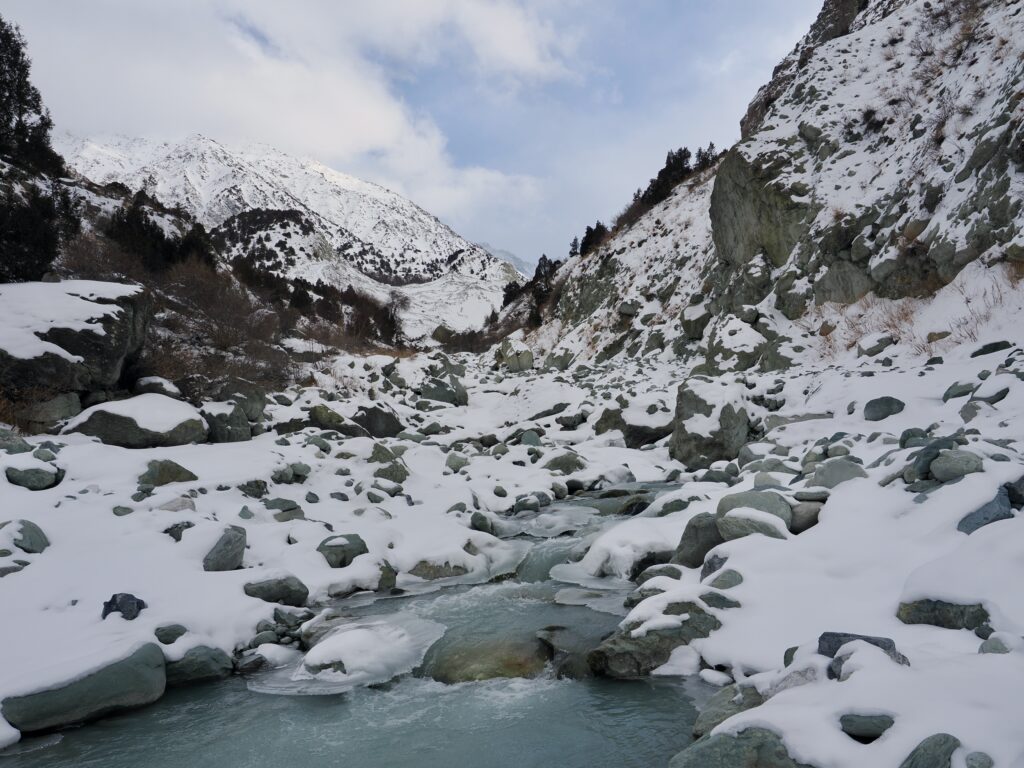
We watched our guides work ahead, and they would signal us when it was safe for us to move. Dharti and I still had not seen the animals we were stalking, but trusted the guides knew what they were doing. We covered another 200 yards of ground as we stalked our way up the drainage. We arrived at a large pile of boulders, and Asad helped point out where the ibex were on the cliffs above, just below the ridge top.
They were incredibly hard to see, even against a snowy background, but the locals had such an incredible eye for them they would often see them with their naked eye well before I ever found them in binoculars. One trick that made locating the animals easier was that rather than trying to describe a certain spot on the mountain, they would just ask for my iPhone and snap a picture of the mountain, then they would rip a blade of grass out of the ground and use it as a pointer to point on the photo where the animals were. After Asad pointed out on my iPhone screen where the ibex were, I quickly located them. I ranged them, and they were around 550 yards.
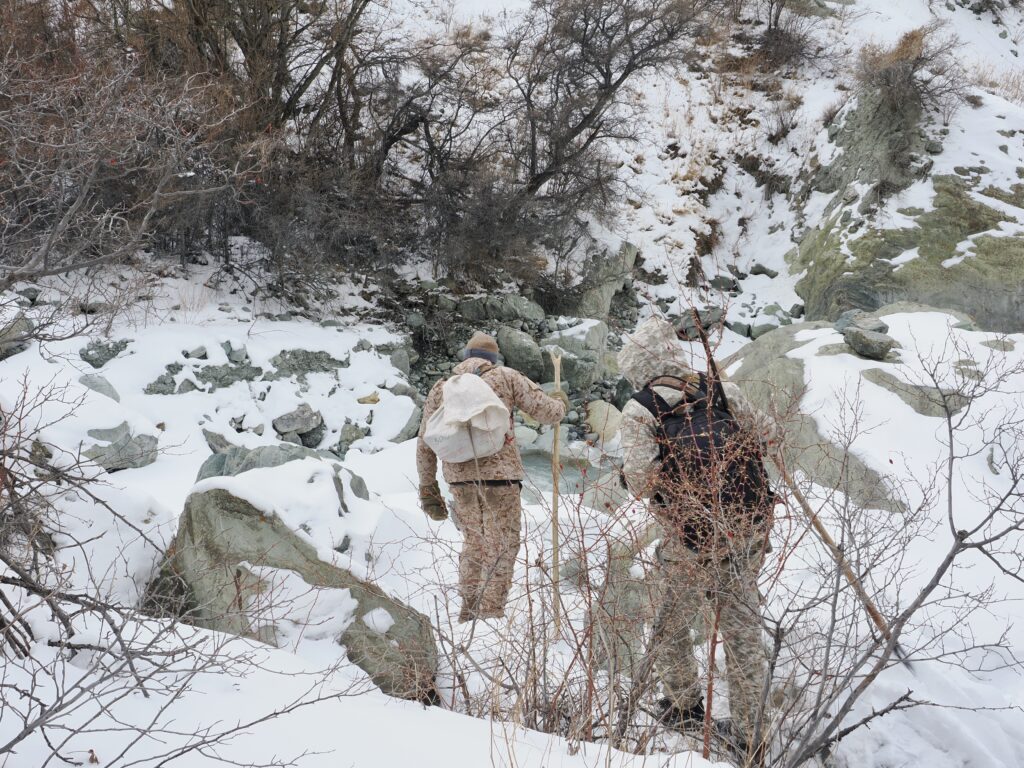
Dharti and Tashtan stayed back in the drainage while Asad, Rasul and I chose a route to stalk closer. The ibex were on their feet, but feeding and completely unaware of our presence. We worked our way straight up from the bottom of the drainage and used a large boulder to hide behind. I ranged several objects and setup to shoot between 375-425 yards. We waited for at least an hour, maybe closer to two hours for the ibex to move. Finally, they started feeding in our direction. They then disappeared out of sight. At that steep of an angle, I did not want to shoot past 450 yards. I was really hoping for a shot under 400 yards, but was comfortable with my rest and had plenty of time to range the distance and dial my scope.
After a few more minutes, we caught a few glimpses of a of the billies. Asad looked back at me and said ‘2 kolon’ (this is how we learned to communicate about if the ibex were legal or not, he was telling me there were two big legal ones), then pointed toward the two ibex that were starting to show themselves. He was telling me that both of those were good ones to shoot, and that I should get ready. I ranged several objects near where the ibex were, waited for an opportunity. Finally, one of the large showed himself in full, directly next to a boulder I had just ranged to be 414 yards (that would be the readout from the rangefinder, which was supposed to be calculating the equivalent horizontal range). I dialed for 425 yards and watched him turn broadside. With a perfectly still rest from a prone position, I squeezed off the shot. To my surprise, the billy just stood their for a moment then walked off.
A miss!?. I couldn’t believe it. Everything felt so good when I shot. The billies disappeared from view, then we watched as three of them went up to the top of the mountain, stopping on the steepest cliffs on the hillside. I was hopeful that meant the 4th one was down somewhere out of sight and that I had made a good hit. To my disappointment, about 4 minutes later we spotted the billy I shot at about 100 yards to the left with a nanny, on a rocky outcropping that separated our valley from another much larger valley leading to the glacier above us. He stopped and presented me with a broadside shot at 519 yards.
Although that was farther than I wanted to shoot, I was also confident at that distance, and the shot angle was much less steep than before. There was still very little wind, so I dialed for 525 and squeezed off what feels like another clean shot. Rasul turned around and said ’20 cm low!’, once again I was surprised I missed, but settled my crosshair again and squeezed off another shot.
Another miss. I was disappointed, and honestly embarrassed at the awful shooting. We watched as the ibex disappeared from our valley entirely, heading over the top of the ridge and out of sight. I felt at that moment like the trip was over, and I felt sick to my stomach. I knew we really had our work cut out for us at that point, and with how far we had already hiked, it didn’t seem like we had enough fuel in the tank to put on a bunch more miles looking for new animals. We quietly walked back to camp, and I replayed the events in my head over and over.
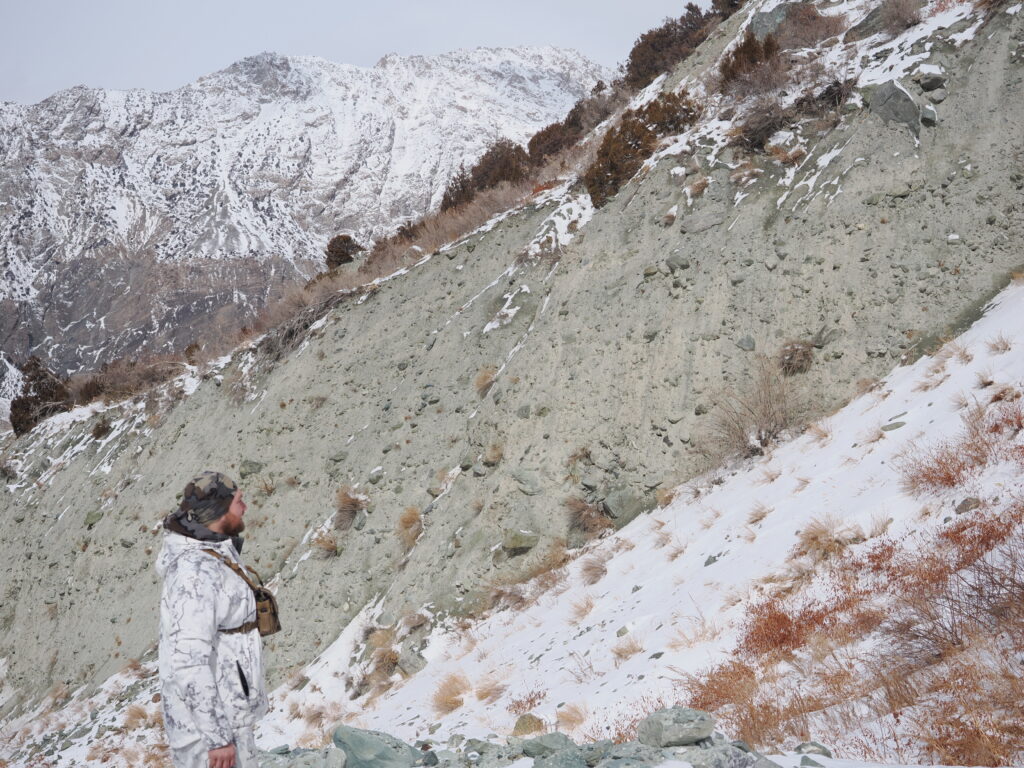
Lessons learned
When we arrived back at camp, our cook and the crew who stayed back had a nice warm fire going for us. We were ready to warm up, and I was ready to clear my head from the events of the day. I started second guessing everything at that moment: Did my rifle scope get knocked off? Is there something wrong with my rangefinder? While our guides worked on heating water for tea and making us lunch, I dug into our duffel and pulled out the backup rangefinder.
From camp I ranged a handful of rocks on the cliffs above us, at a similar distance to my miss. The backup rangefinder was reading almost 50 yards shorter than my primary rangefinder at the same object. In a way, I was relieved that I had narrowed down the problem, but super disappointed that an equipment failure like that led to me missing a shot of a lifetime.
That was a major learning lesson; I purchased a new rangefinder before the trip and only tested it on a level plane. The angle compensation was not functioning at all, so when I ranged the billy at 414 yards it was not the angle modified range (the distance I am supposed to aim for) – if the angle modification was working properly, the readout on the rangefinder should have been about 380 yards. I likely shot a foot or two over his back.
I purchased the unit because I wanted a more reliable piece of gear. Several months after the trip, I pulled the unit out again to read the user manual and dig through forums on the internet regarding the issue I had with the rangefinder. I learned that what I previously thought was a malfunction was actually user error and not having it setup properly. The issue I had was completely preventable, but I didn’t test it before taking it to the other side of the world; a mistake I will not make again.
After lunch, Asad, Dovlatyor, Rasul and I went out to glass from some other directions around camp. We hiked up the opposite side of the drainage where we could look farther up the main river valley. From the top of the ridge, we could see for several miles in each direction. We spotted a couple small groups in the distance, but due to the terrain, they were at least 1-2 days away and would have required dropping off some giant cliffs to cross the main drainage and hike up the other side.
Our other option was to hike farther up the drainage we were camped on and continue toward the glacier. Rasul assured me the area near the glacier held a good number of animals, but it was very cold and there was a lot of snow there, so avalanche danger could make it difficult to access. The elevation increased rapidly as well as the valley curved upward toward the glacier, and I knew that would make if difficult for us as we were already camped at over 9200’.
That night around the fire, everyone did their best to put the missed shot behind us. That night ended up being one of the most memorable of the entire trip. The guides built us a raging bonfire and kept us plenty warm. Using Rasul as a translator, we learned a lot about the locals of Mok and about their lives there in the mountains. We learned the spot we were camped was the place they camp when they prospect for gold during the summer months – that was their primary livelihood there in addition to a few groups of ibex hunters they guide per year. I was working at a mine in Alaska at the time, and it was fun explaining the huge scale operation at that mine compared to what those guys were used to there in the mountains.
We talked about the wildlife in Alaska, and watched their eyes get big when we converted the weight and size of our moose and brown bears into meters and kilograms. We shared many stories and much laughter throughout the evening. That’s the most I laughed in a long time and it took my mind off the missed opportunity of that day.
That night, we chose to setup our tent to give us a little more space. The footprint was quite a bit larger, and Rasul joked that if they had a tent that big, they would all sleep in it! Since we were planning on using our tent more as an ‘emergency’ shelter on the mountain (in case we needed to spend an unplanned night out), we chose to bring just the outer tent and footprint of our Hilleberg tent. If we knew we were planning to spend that many nights out, we would have found a way to pack the inner tent as well. Although still cold and frosty inside our tent that night, the shape of it allowed much more condensation to move toward the edges and we were much drier than the night before. Temps into the single digits that night made us happy we had our heavy sleeping bags along.
Day 3
After our typical morning tea and breakfast around the fire, we started packing to head up the drainage toward the glacier. Dharti and I put on our white suits and loaded our packs to be light and agile, at least as much as possible. Asad and Tashtan departed ahead of us, working as scouts to locate animals while we trailed behind at our own pace.
As we climbed the drainage, we came to a fork where two separate smaller creeks joined. The creek to the right led to the large glacier at the head of the valley, and the creek to the left drained a differet set of mountains on another side of the valley. The two creeks were separated by a dome-shaped ridge. We chose the left creek to stay out of view from where we believed more animals to be.
We slowly gained elevation as we continued up the drainage. Although we were packing light, the altitude started to make it difficult for us to breathe as we got closer to 10,000’. Our bodies were just not used to it, and we had to take frequent breaks to catch our breath. The guides seemed completely unaffected by anything, and busted trail through the snow like nothing.
The drainage finally flattened out and we caught up with our scouts. At that point, I’m guessing we gained nearly 1000’ from camp. Asad and Rasul motioned me over to them and asked me to stay low and get my spotting scope out. Dharti was not feeling well. The altitude was making it hard for both of us to breathe, but she was having an especially hard time recovering after our last push. Although the weather was beautiful and sunny that day, the air was dry and it made it even more difficult to breathe. It didn’t help that we left our high protein snacks back at the guest house, thinking we would be back there after a day or two.
Asad pointed out a couple different groups of ibex off to our east – saying there are some big ones there, but it is very dangerous to go after them due to the avalanche danger. He then asked me to get my spotting scope out, and crawl up to the top of the ridge with him to look across the glacier to the other side. He had a group of 5 billies located but wanted me to take a closer look at them. When I finally looked through the spotting scope, I could see all 5, which all looked like giants to me. Although hard to find initially, once they are in the scope their giant horns looked absolutely massive against the snow white background. It was simply incredible to watch them in in that environment.
The 5 billies were bedded on a bench across the glacier and several hundred feet above us. I ranged the hillside they were on, and they were about 900 yards from us. Rasul and Asad assured me all 5 of those were legal, and they had already made a stalk plan for me. They believed this was the same group I missed my shot on the day before. To me, any legal animal would be a trophy on this trip, and I would have been thrilled with any of them. I could feel the adrenaline start pumping as Rasul explained the plan to me.
As we made plans to leave on the stalk, Dharti was really feeling the effects of the altitude and decided she didn’t want to continue any further. We made the decision that she was going to head back to camp with Oyatilla while I went on the stalk with Tashtan. Rasul and Asad were going to stay back and watch from a distance. It was 2:00 in the afternoon, so there was plenty of daylight to make a play. We parted ways and I followed Tashtan as we dropped into glacial valley
After a short drop, we were side hilling in nearly waist-deep snow on a steep incline. I followed Tashtan’s lead, and he plowed through the powder to break trail for me. After a short distance, we were hidden in a small patch of trees (one of the only patches of trees I saw in that entire area). We used those trees to disappear from view and gain a several hundred yards on the ibex.
When we emerged from the trees, the ibex were staring right at us. Tashtan held his hand out to tell me to hold still until they looked away. They were now on their feet, but after looking our direction for a few moments, they returned to feeding. I quickly checked the range – they were at 515 yards.
From where we were standing, only one short hill stood in between us and a wide-open glacier that separated us from these 5 billies on the other side. Even though the conditions were excellent and there was only a light breeze coming off the glacier, I really wanted to keep my shot to within 425 yards. We watched the ibex feed from right to left, and they disappeared out of sight into a small ravine. That was our opportunity to move.
I followed Tashtan as he dropped onto the glacier, pushing through knee-deep snow and breaking trail while choosing a safe route across the glacier’s broken and hilly surface. I was amazed how fast he was able to move – standing at 5’6”, Tashtan blazed through the snow and I had a hard time keeping up with him. We moved with some urgency to get as close as we could before they re-emerged. In just a few minutes, we covered over 100 yards.
When Tashtan saw the first ibex appear from behind the ridge, he signaled for me to drop to the ground and crawl across the glacier, toward where he was crouched. With the backup rangefinder in hand, I ranged the hillside near where the first billy stood – 405 yards. I then handed Tashtan the rangefinder while I got setup to shoot. He ranged the animals and drew the number ‘404’ in the snow. I dialed my scope turret for 400 yards, found a windblown rock to setup the bipod out of the snow, and waited for a billy to turn broadside and present an opportunity. Just then, one of the ibex took a step forward and presented a perfect opportunity.
I picked out a spot on the animal and squeezed off the shot. I looked up to watch the ibex tumbling down the hillside, end over end. As the ibex dropped, I instantly hugged Tashtan in celebration. I was so relieved that everything came together after such a long stalk. When I left camp that morning I started thinking our entire trip was going to be a bust. Our celebration came to a brief hold when I watched the ibex get back on its feet and start walking uphill. I got back down on the ground and made another shot. The ibex walked another 20-30 yards, then laid down. I watched him lay his head down, then his body went limp and he tumbled another 75 feet down the mountain where he came to a final rest.
Rasul, Asad and Dovlatyor were watching from afar, and started making their way toward us shortly after the shots. I followed Tashtan’s route through the snow as we crossed the glacier. The thin air made it hard for me to catch my breath as we continued to gain elevation, but following the trail he was blazing helped immensely. We covered the distance quickly, ( or so I thought), but as we approached the hillside the others were right behind us. They congratulated me and blew past us to grab the ibex and bring it down the hillside to a spot where we could work on it. Once again, I was amazed at how fast those guys could move in the mountains.
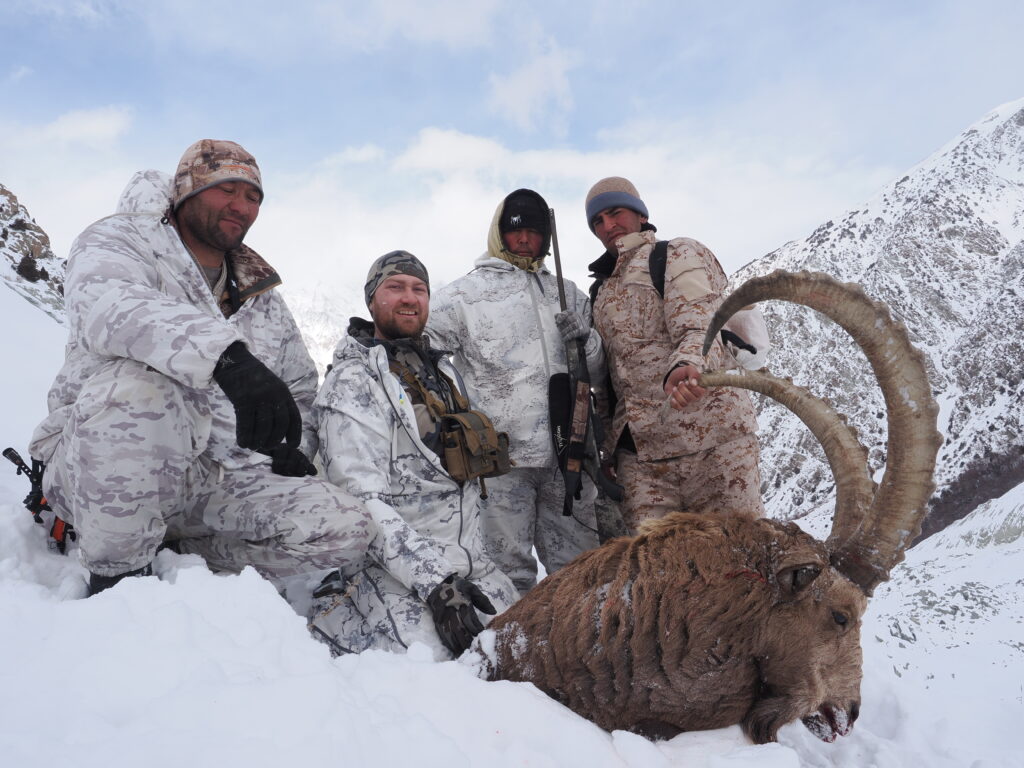
The Pack Out
Rasul and Dovlatyor quartered and caped the ibex, and they split the load between the 4 of them. I did feel a little odd about not carrying my own weight, but as we descended the glacier I realized that I could barely keep up with these guys, even without a load on my back. We hustled down the glacier, but took a few breaks to regroup and took in the scenery and the moment. The hunt had turned into such a team bonding experience due to all the hardships experienced, and I think everyone was feeling relieved in that moment. Despite the serious faces in the pictures, it was all smiles on the way back to camp.
We returned to camp just before dark that evening. Thankfully, Dharti was feeling better and the guides that returned to camp with her had a fire going for use before we arrived. The morale in camp was high that evening, with everyone smiling and laughing. I told Rasul we were thrilled with one ibex, and we were happy to pack out in the morning.
Day 4
Early in the morning, we loaded up camp and started the long pack out. Everyone, including Dharti and I started out with fully-loaded packs and started the steep climb from the valley floor. It was a grueling climb for about 1000’, Dovlatyor and Asad worked ahead and dropped their packs before meeting us about halfway up the hill to grab ours. Over the course of the next 4-5 hours, we slowly descended back toward the river bottom where we crossed on the hand cart. Once again, only Dharti and I needed to stop for snacks and water – the others just kept pushing along without stopping.
By early afternoon, we were back at the river crossing. As we loaded our gear and ourselves across the ‘bridge’, we were relieved to see the mules waiting for us on the other side. Dharti and I crossed first, and we finally sat down to a warming fire and snacks to replenish with. Once all the gear was across the river, I felt we could finally relax. We took a few more group photos before leaving valley for last time. It was now afternoon, so we were going to have to keep moving to make it off the mountain by dark.
We had one horse and two mules in total leaving the campfire, so Dharti jumped on while I walked the first section of the trail back up to the plateau. After a short walk, another horse joined us, brought over by what looked like a young child form the village. I was able to ride as well from that point, while the youngster held the reins of the horse to direct it through the narrow, winding trail.
The ride out was incredibly peaceful and beautiful. It felt great to be riding after another long day on the mountain, but I felt a little bad for the the rest of our guides who were on foot. They seemed completely content and happy, however. The young horse-handler had only a pair of tennis shoes and a light sweatshirt, and seemed very cold, but politely refused offers to wear our extra clothes. As the sun set, the temperatures dropped into the low 20’s.
On the ride out, I couldn’t help to reflect on how incredible of an experience it turned out to be, through all the ups and downs and challenges we experienced. The trip lived up to the expectations of being a true mountain hunt, and I am thankful for the experiences we have to reflect on now for the rest of our lives.
We reached the old couples house on the hillside where we said goodbye to the youngster and left him a nice handful of Tajik Somoni for their efforts. We said goodbye to the woman at the mountain house, and unfortunately had to keep moving because it was getting dark. We wanted so badly to visit with her again, but we knew we had to keep moving. We will never forget that couple, the incredible setting of their home on the mountain, or their warm hospitality.
When we finally made it back across the footbridge, we were met by an extra vehicle that Dovlatyor had called to help from the mountain. It was a super beat up white 4×4 station wagon type vehicle which I noticed the driver had to hotwire each time he wanted to start it. The parking brake was broken, so he just carried a rock around and threw that out each time he wanted to stop and keep the vehicle from rolling off a cliff or into a river.
We had two vehicles this time, so there was a little extra space for us to breath in the back seat. The driver had to stop to pour water in the radiator a few times on the ride back, and each time it made me nervous when he would get out and throw a rock behind the tire to keep us from plummeting off a cliff off the side of the road. Once we finally made it through a the remote police checkpoint, and got dropped off with the rest of our crew at Asad’s house in Mok.
While we unpacked, everyone gave us privacy in the guest room while we changed into clean clothes and prepared our tip money for the crew. Once we were ready to tip everyone, we invited everyone in and handed tips to everyone there. Initially I felt that we brought a lot of money for tips, but in that moment I felt that we couldn’t give them enough. I was surprised that our muleskinner had come all the way back to Mok with us, even though he was many miles away from his house up on the mountain. Our cash was left behind in Mok, so he came all the way there just to get his tip. Once he had his tip in hand, he thanked us then got a ride back to the footbridge and walked all the way back up to his house that evening in the dark.
Although incredibly resourceful, it was apparent that what the guides really needed was gear. They don’t have much access to modern hunting gear over there, so they really appreciated everything we were able to leave behind for them. We left a pair of hunting pants, some hats, an inexpensive pair of binoculars, a pair of gaiters, some microspikes, several headlamps, our white camo suits and Havalon knives with dozens of extra blades. We also left the giant bag of snacks that we didn’t get to eat because we thought we were only heading out for one day. It was clear that most of the hunting gear they had was left behind by other hunters from previous trips. If I ever went back, I would leave more gear than we did as they were so appreciative of everything we left for them.
Our final morning in the village was bittersweet. We were ready to head back toward civilization, but knew saying goodbye to our new friends would be difficult. As we packed our gear, Dharti got a personal tour around the village with the wife of one of our guides. Her tour included a stop at the schoolhouse where children were learning English. After her tour, we gathered for one final picture with our new friends from the village before loading up to head out.
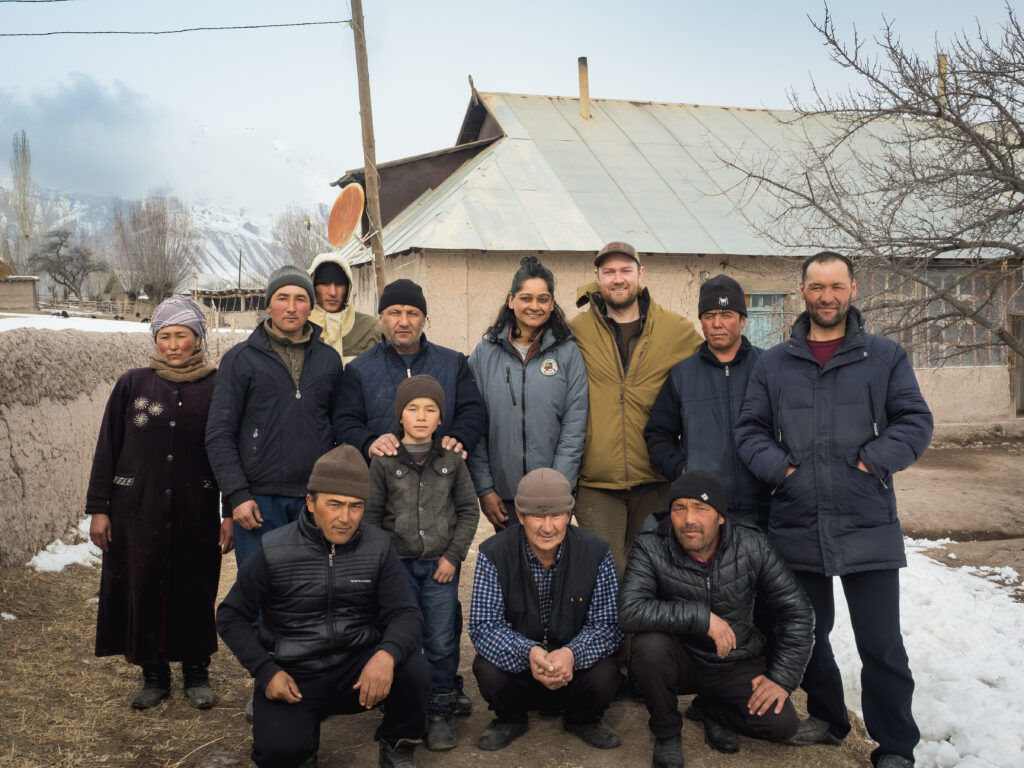
Following our hunt, we spent several more days exploring Dushanbe and some other parts of Tajikistan. Overall, I was incredibly impressed by the rich history of the region, the people and their culture. This was a challenging hunt and we experienced what I believe to be a very authentic and genuine hunt experience in an incredibly rugged and beautiful place. It was a pleasure to hunt with these locals in a true community-based setting where our dollars directly benefitted the people and community in which we hunted. We were able to visit another conservancy and photograph Markhors which were also recovered thanks to the conservation dollars provided by hunters travelling to the region. Tajikistan is a paradise for hunters and wildlife enthusiasts alike.
Some additional reading material, if interested in learning more about the history of community-based hunting in Tajikistan:

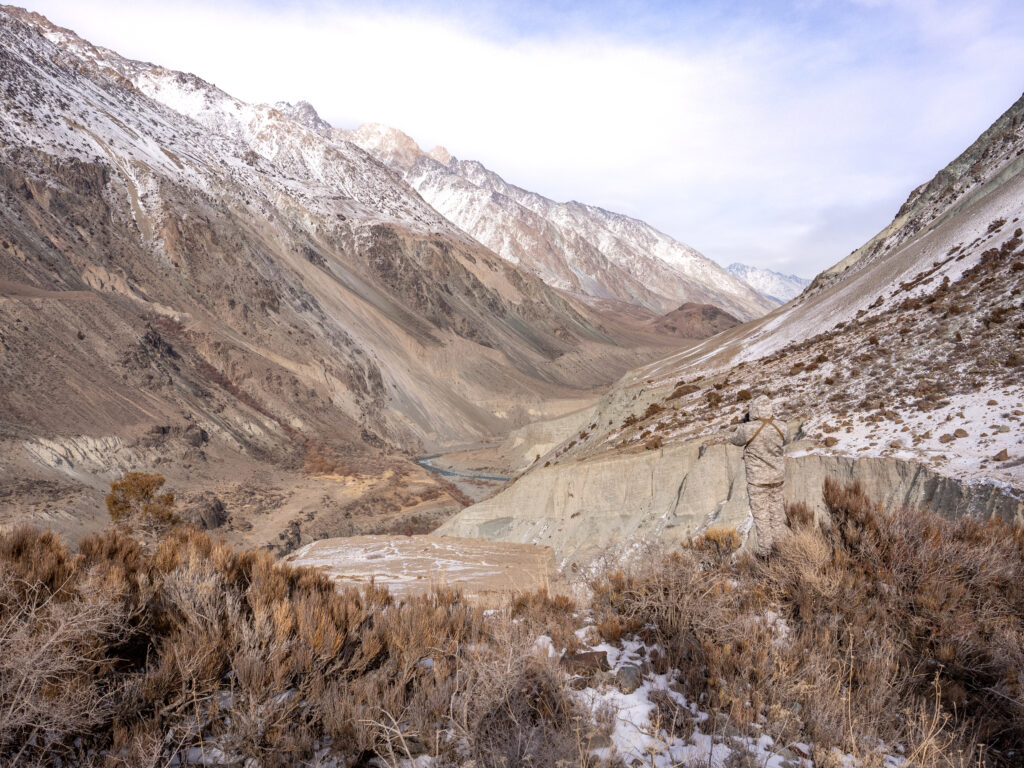
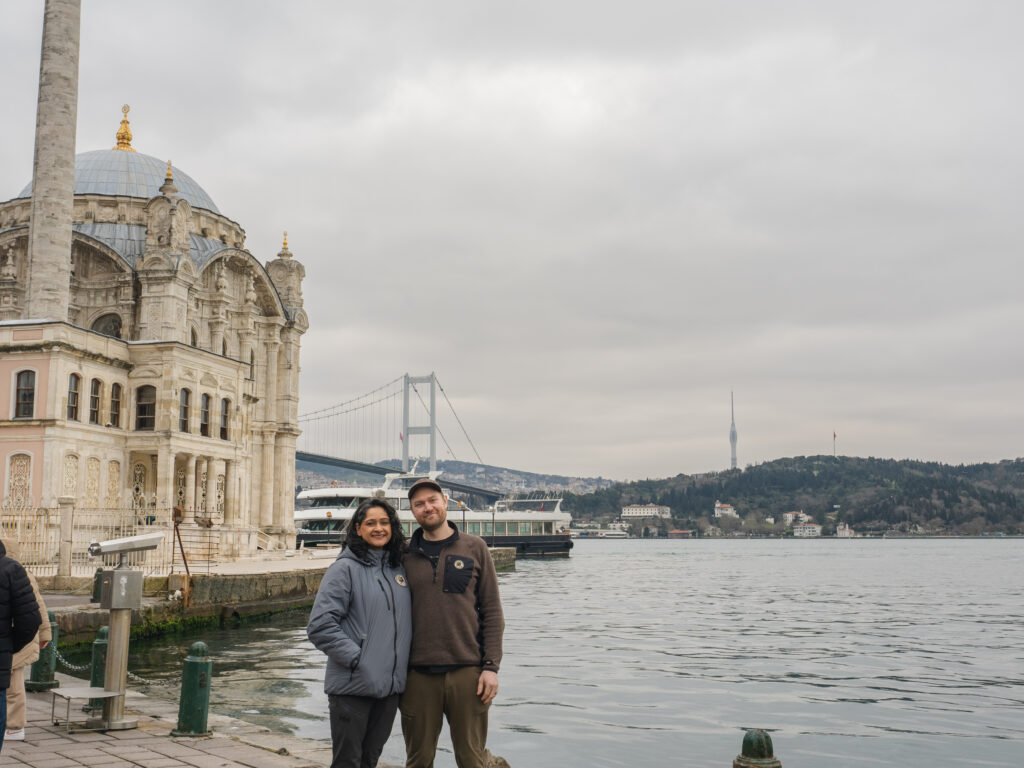
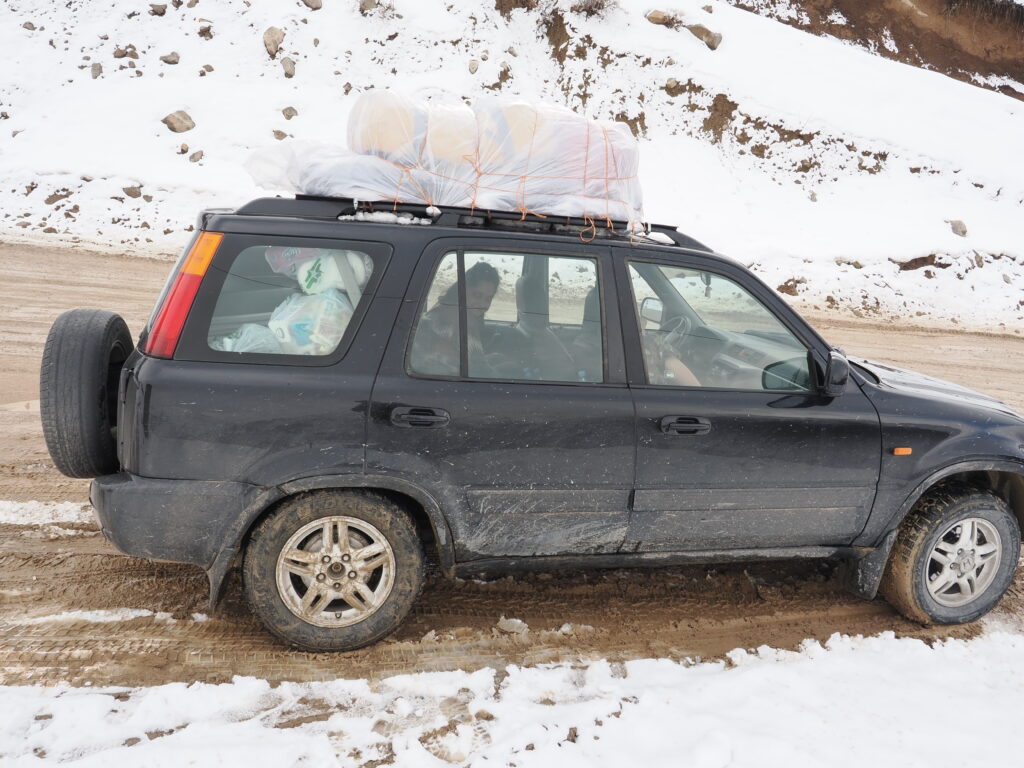
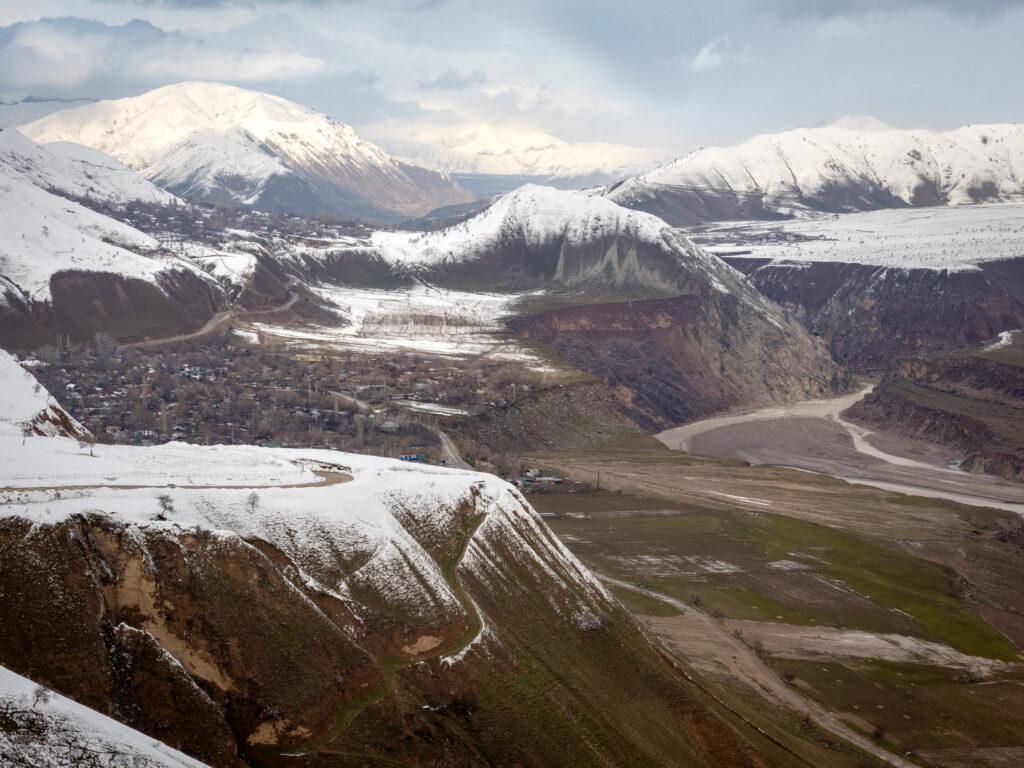
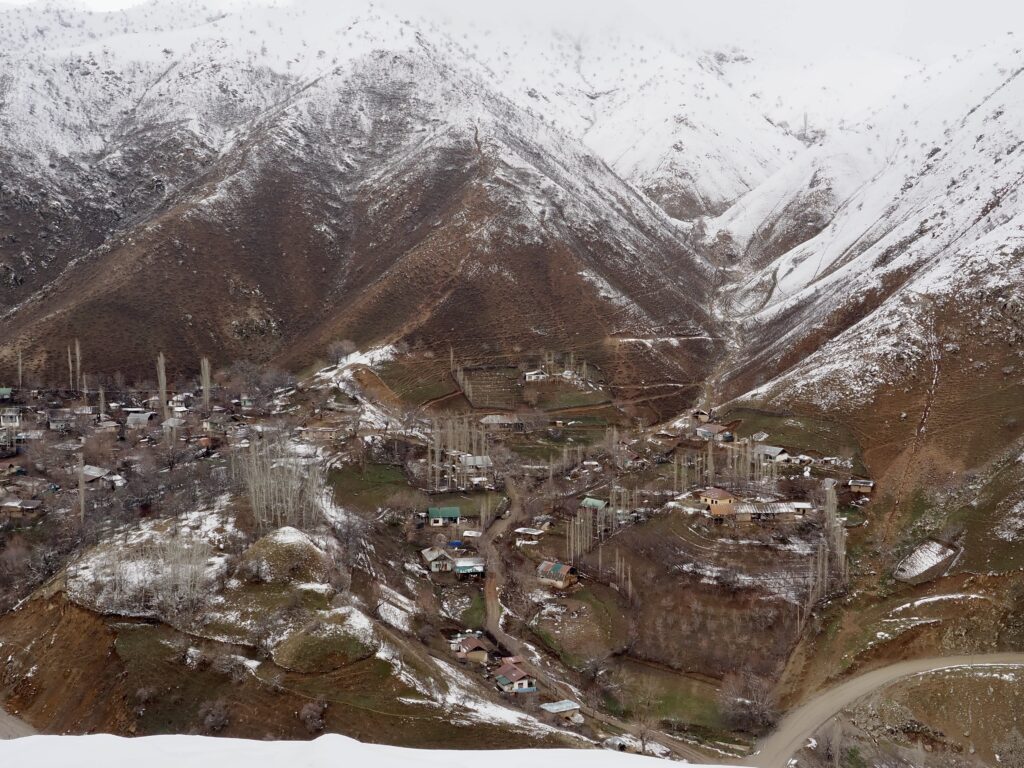
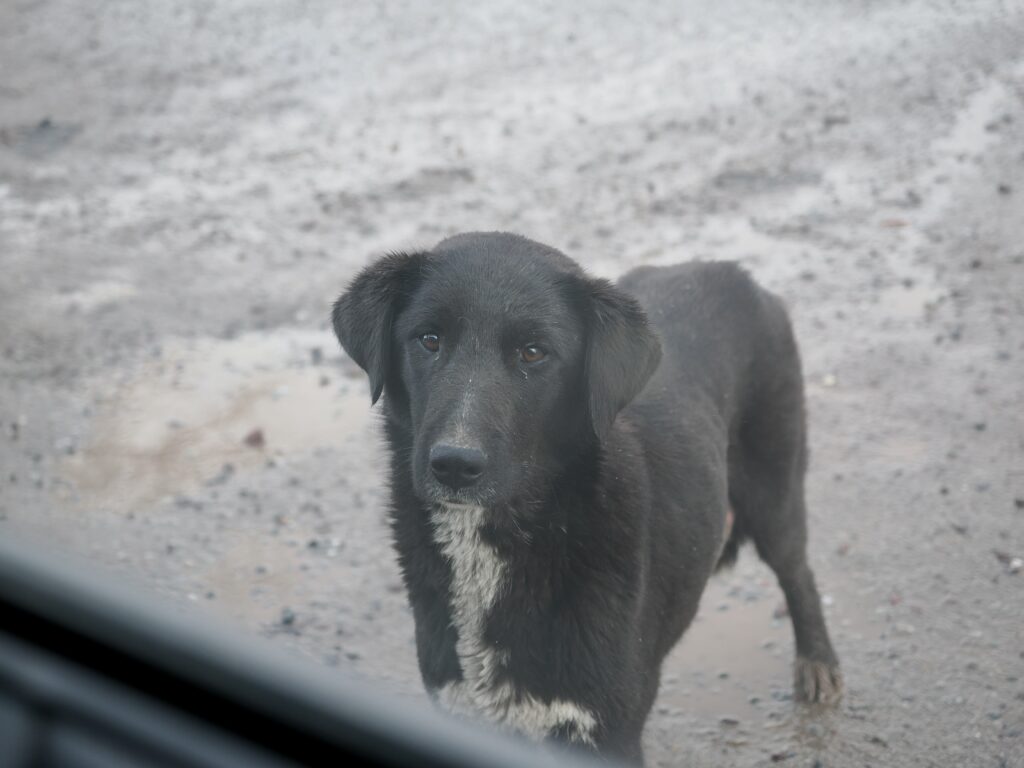
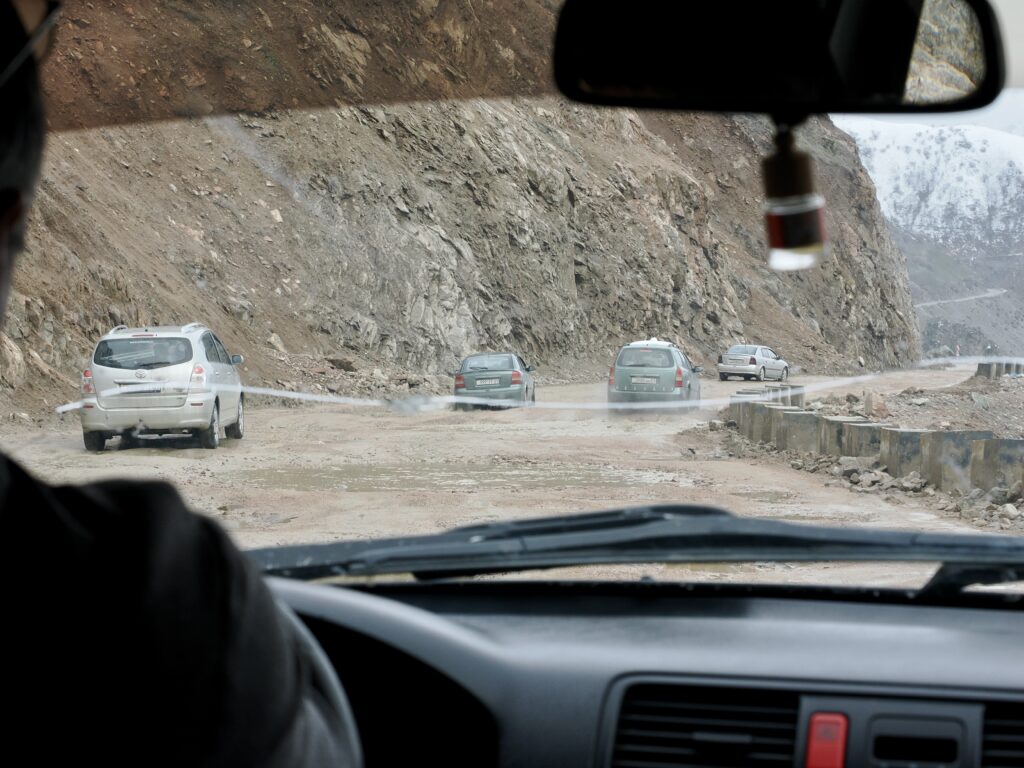
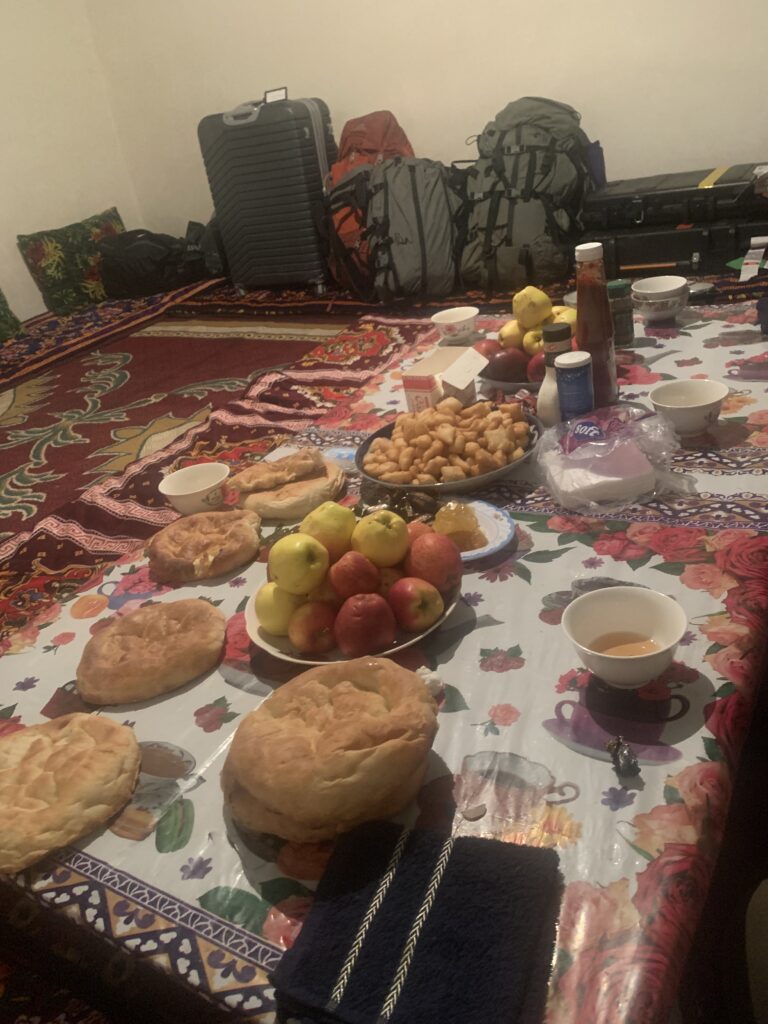


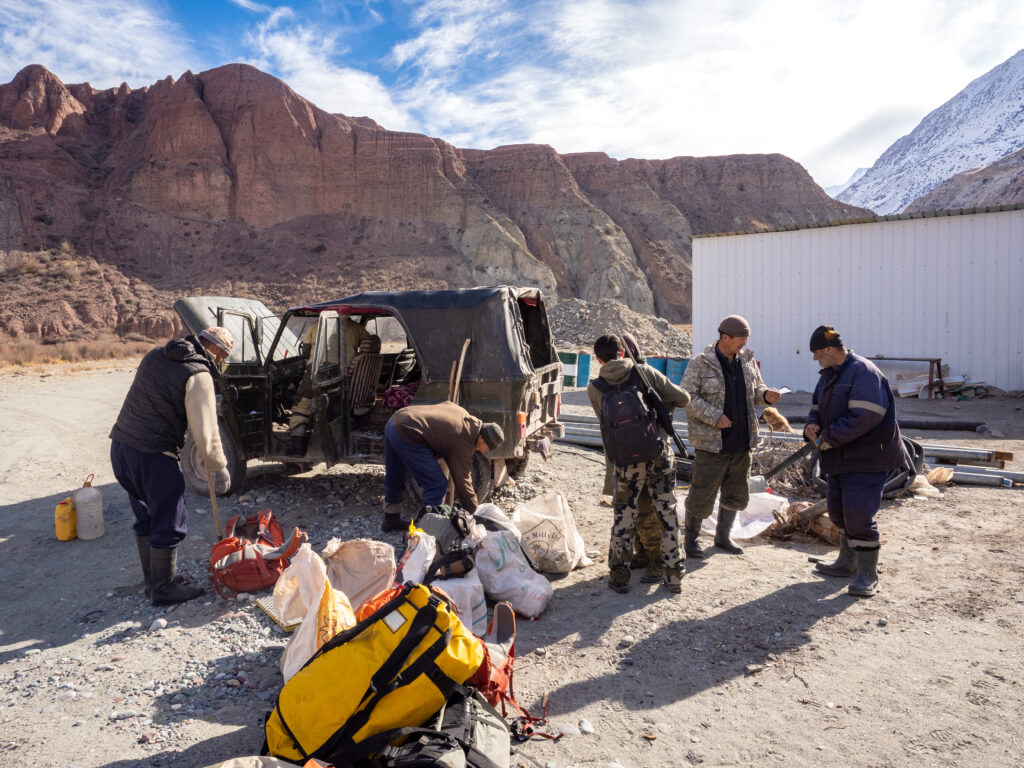

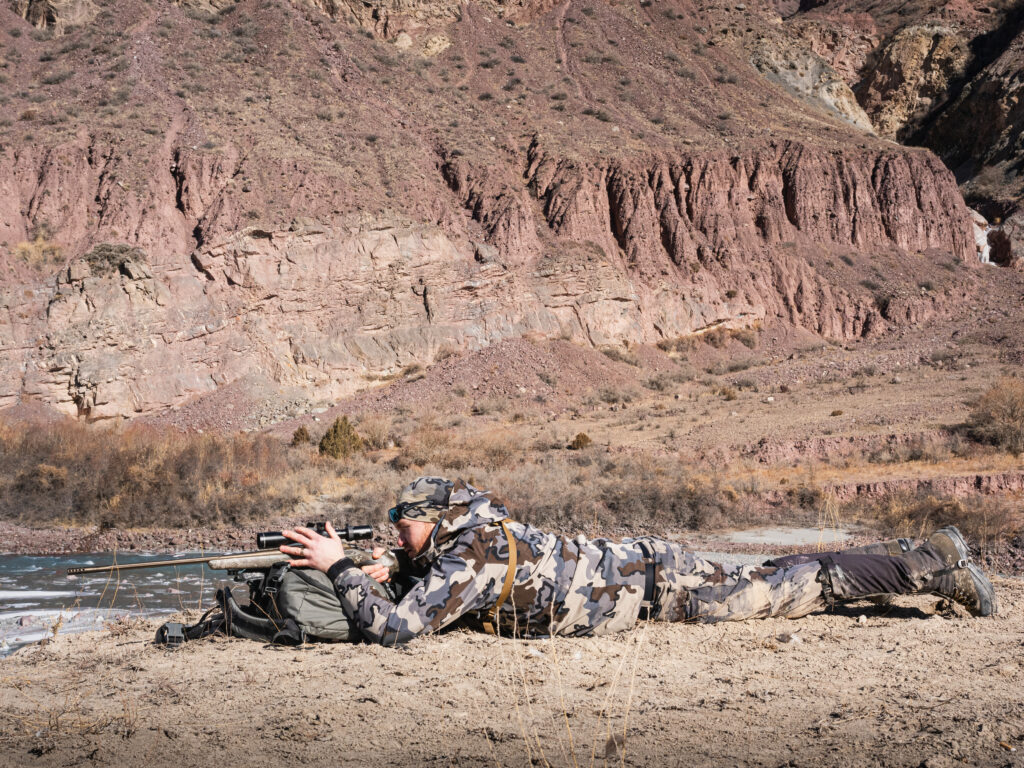
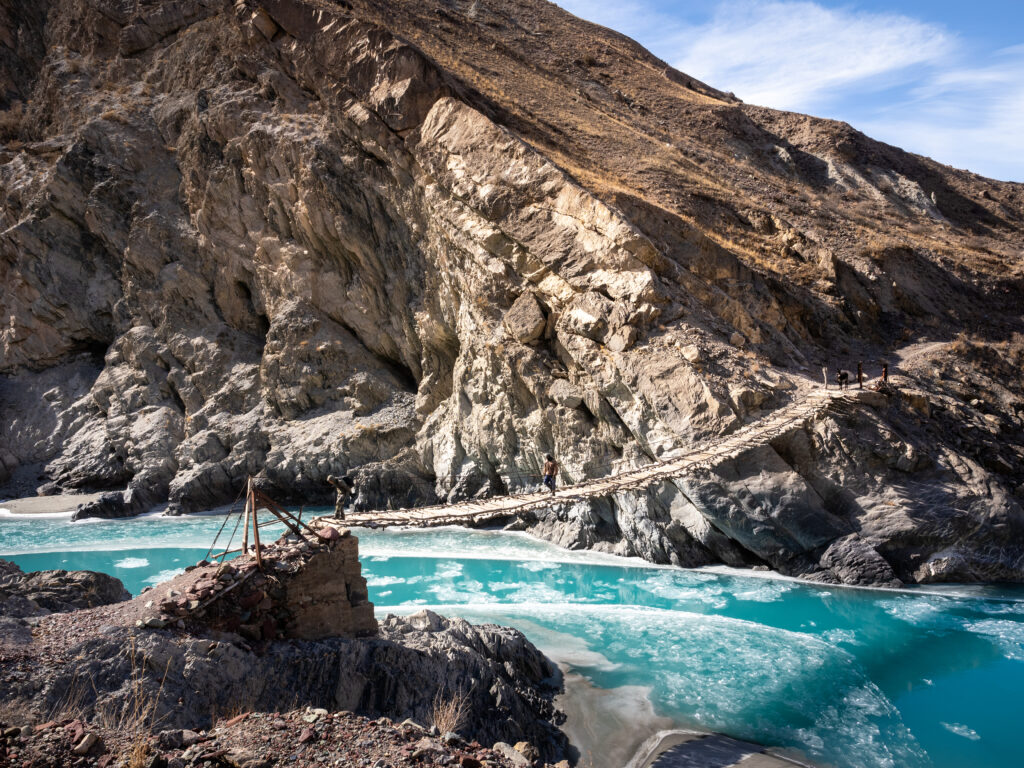
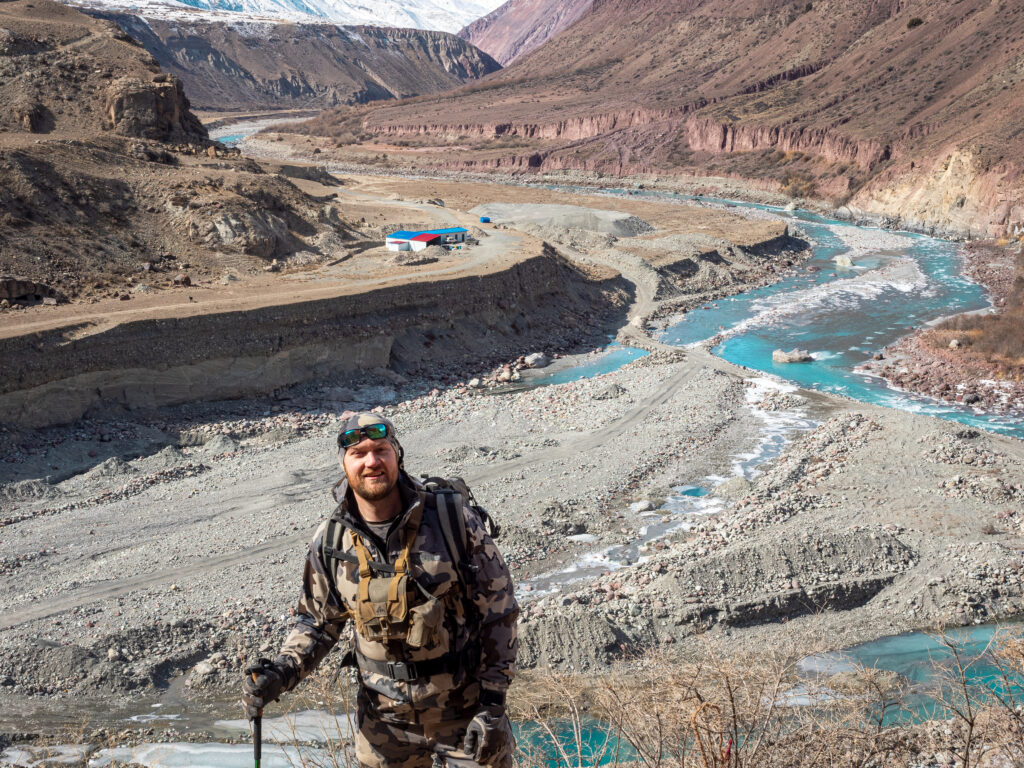
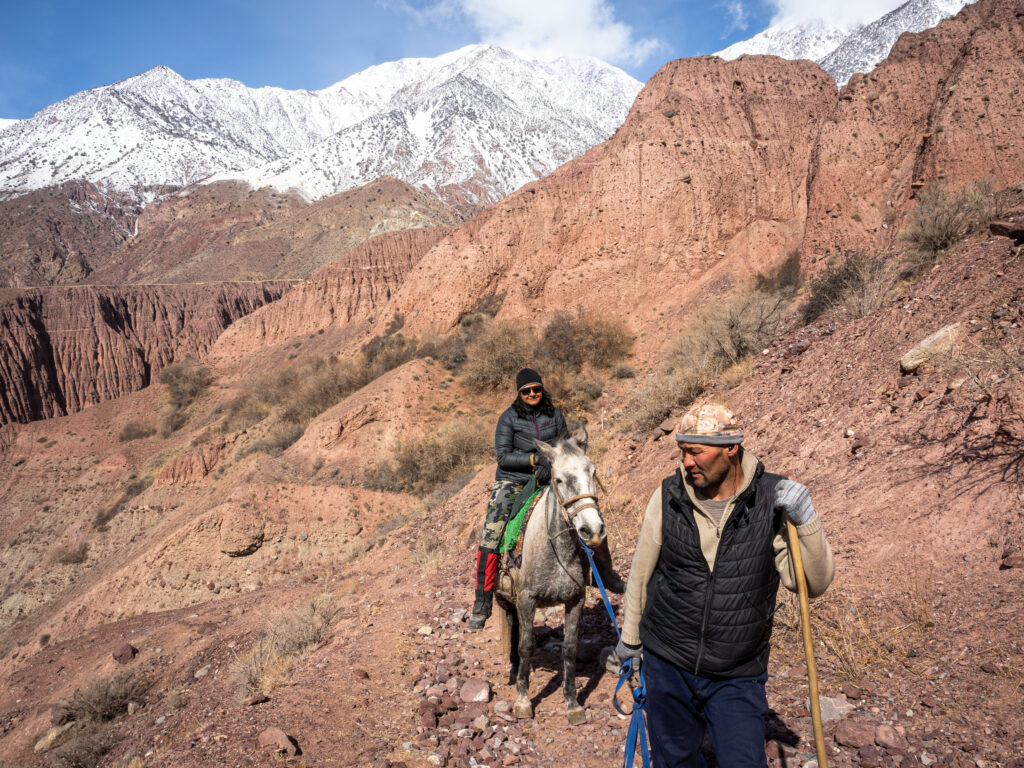
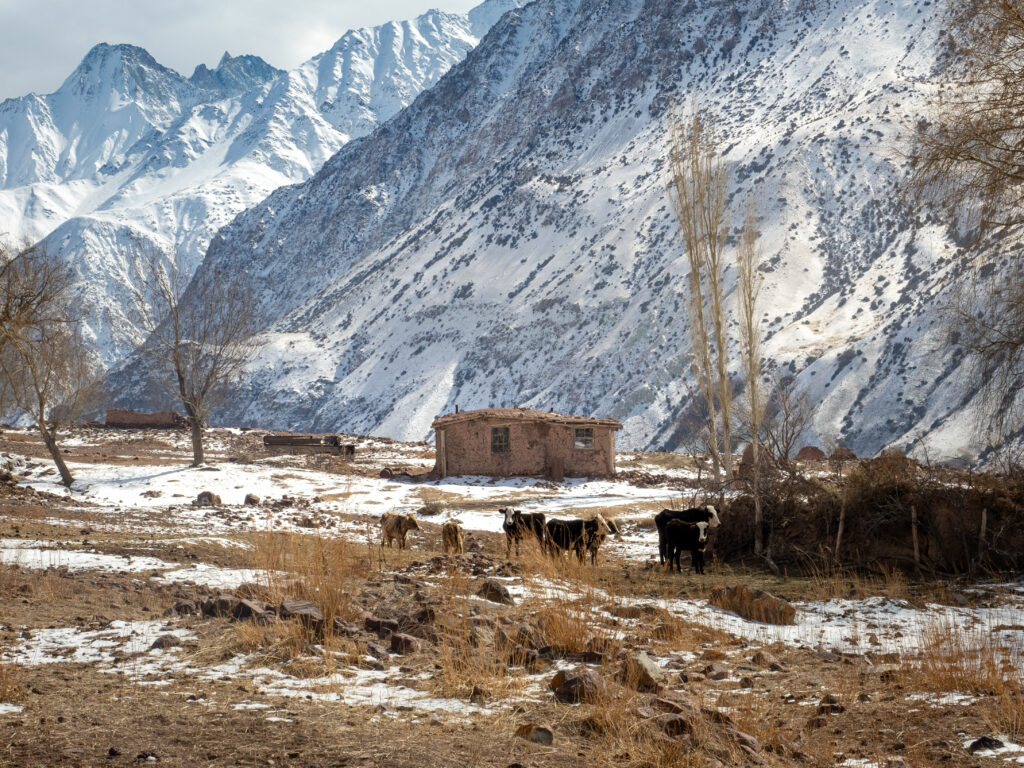
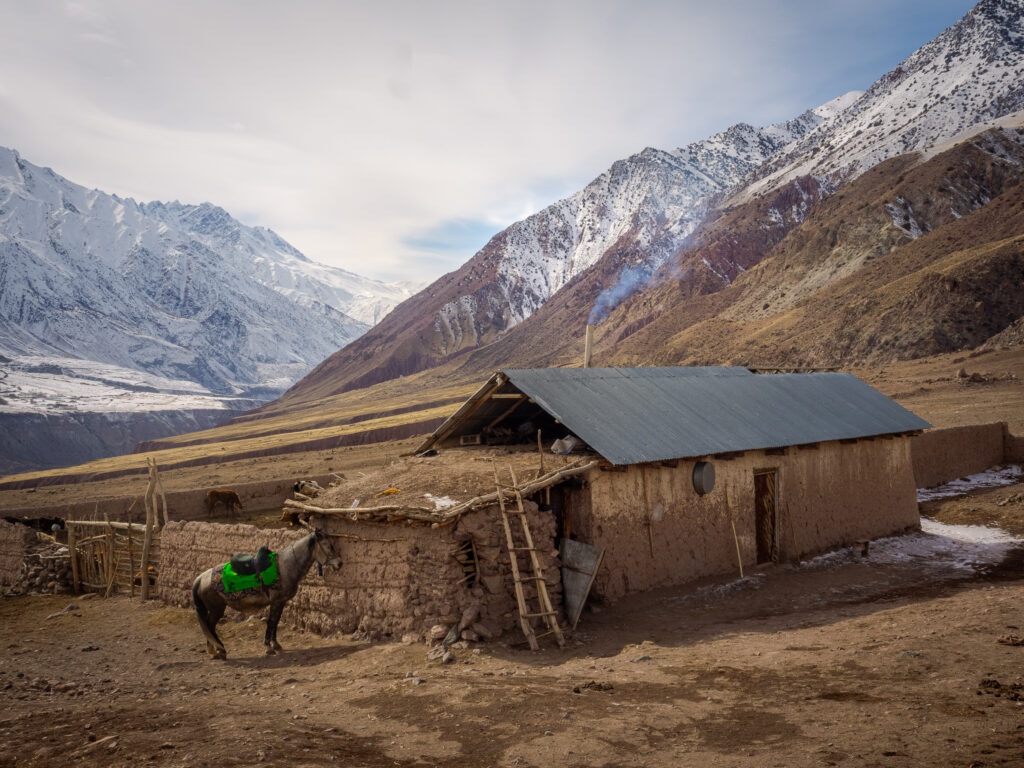
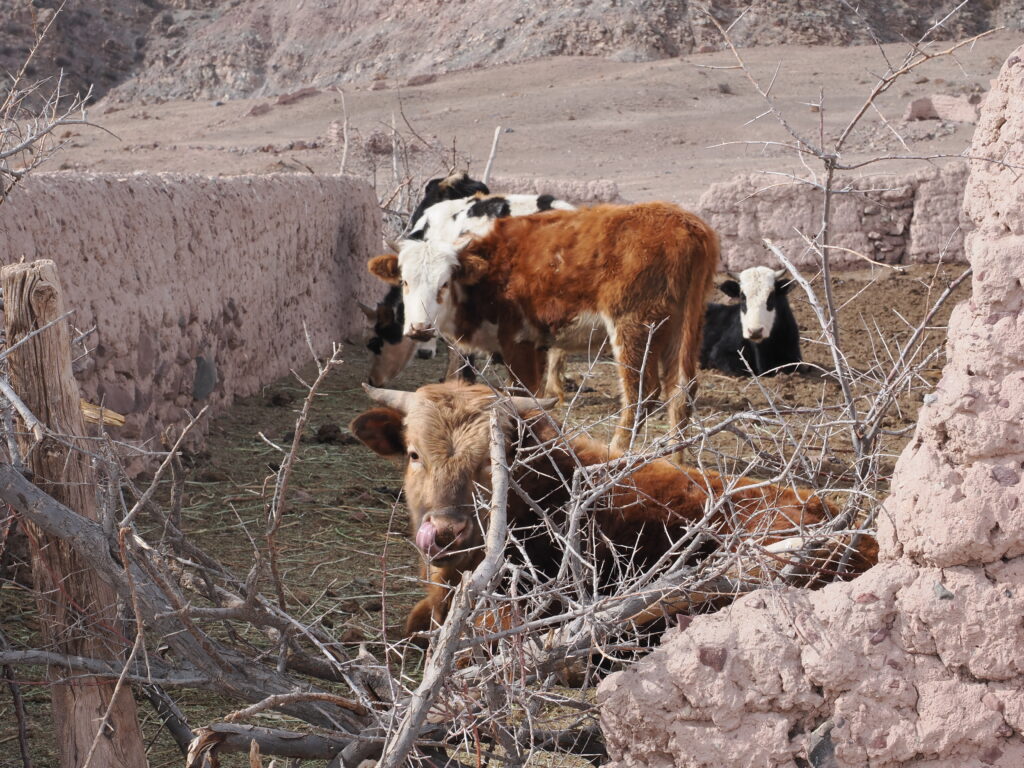


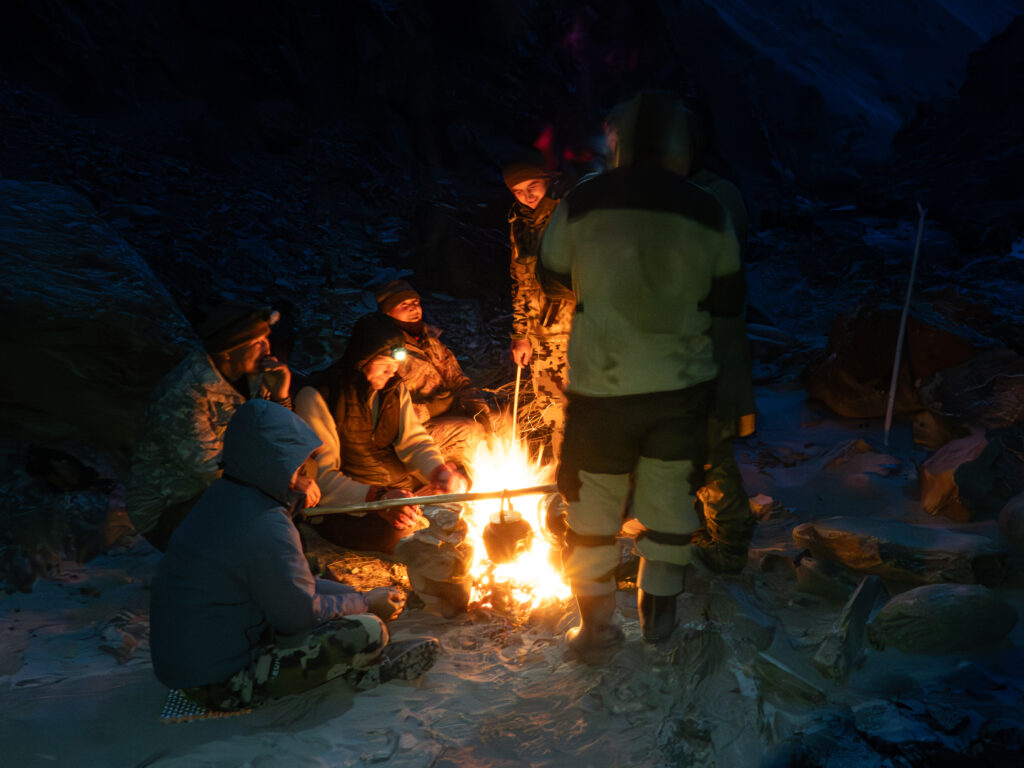
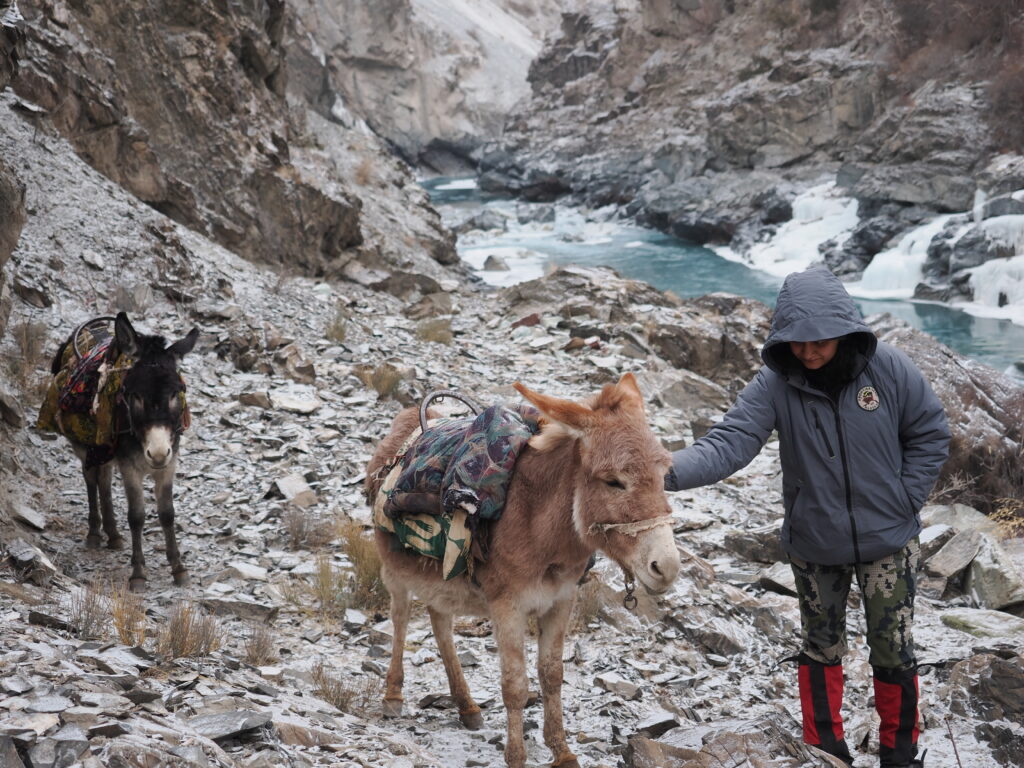
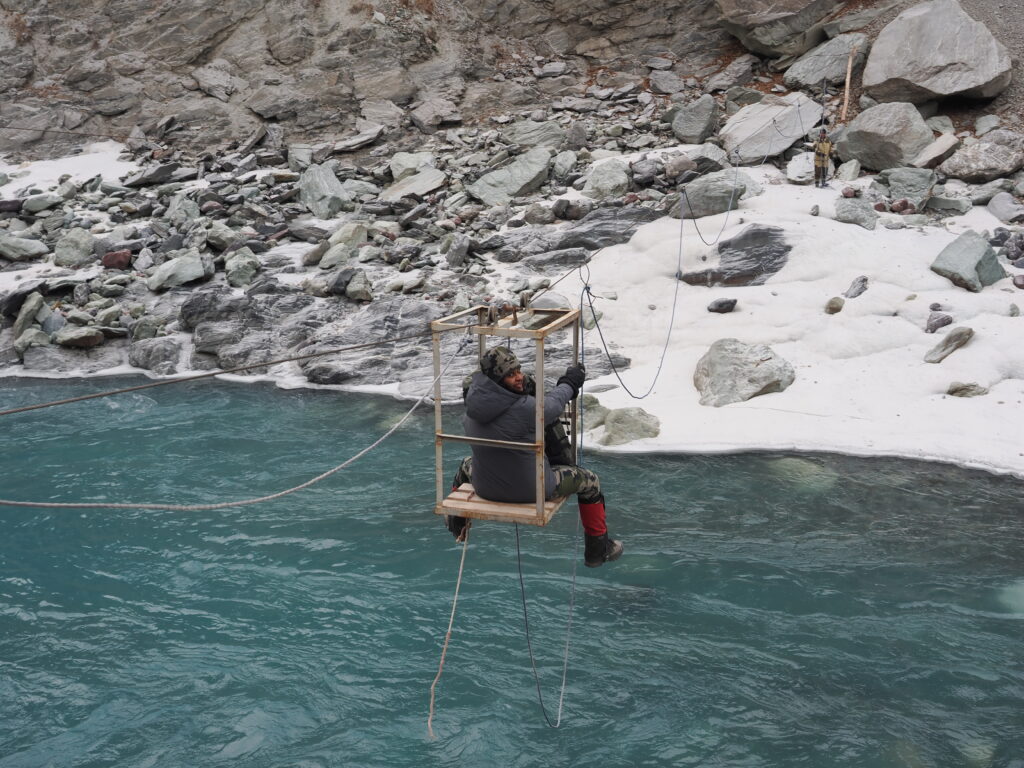
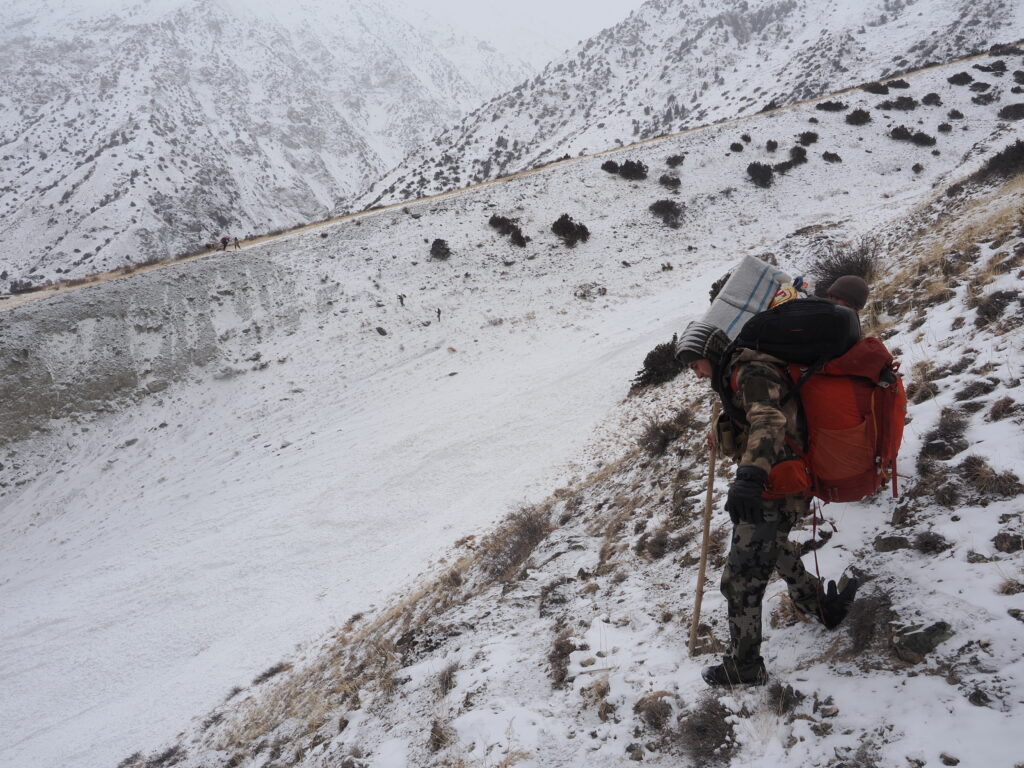

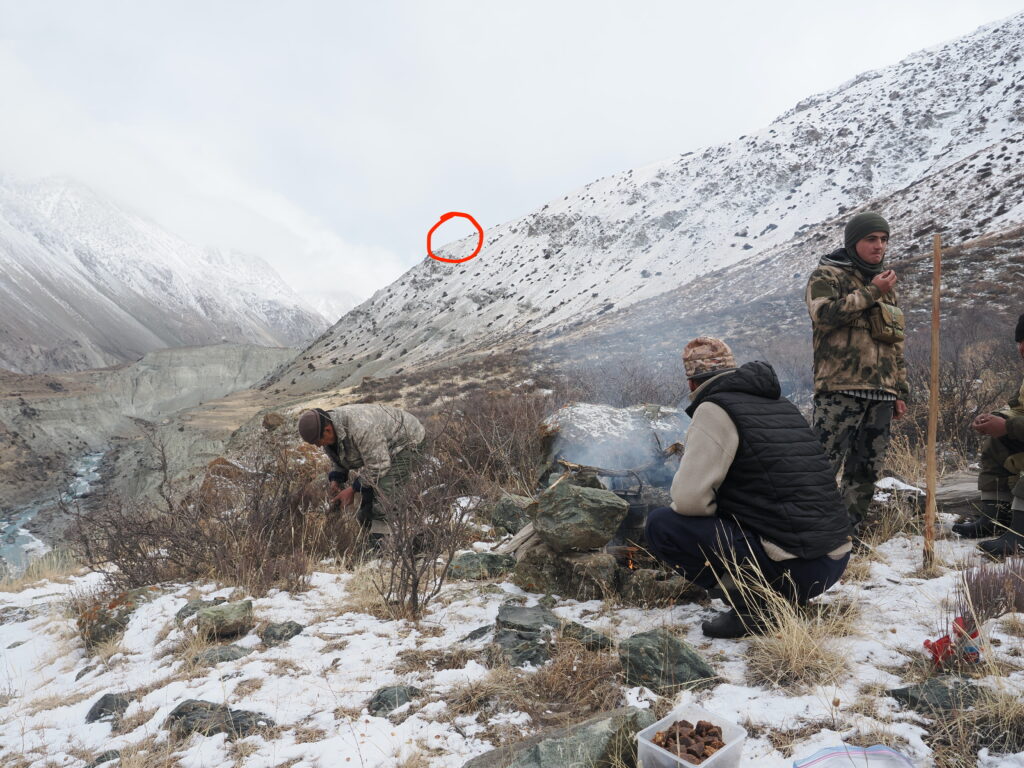
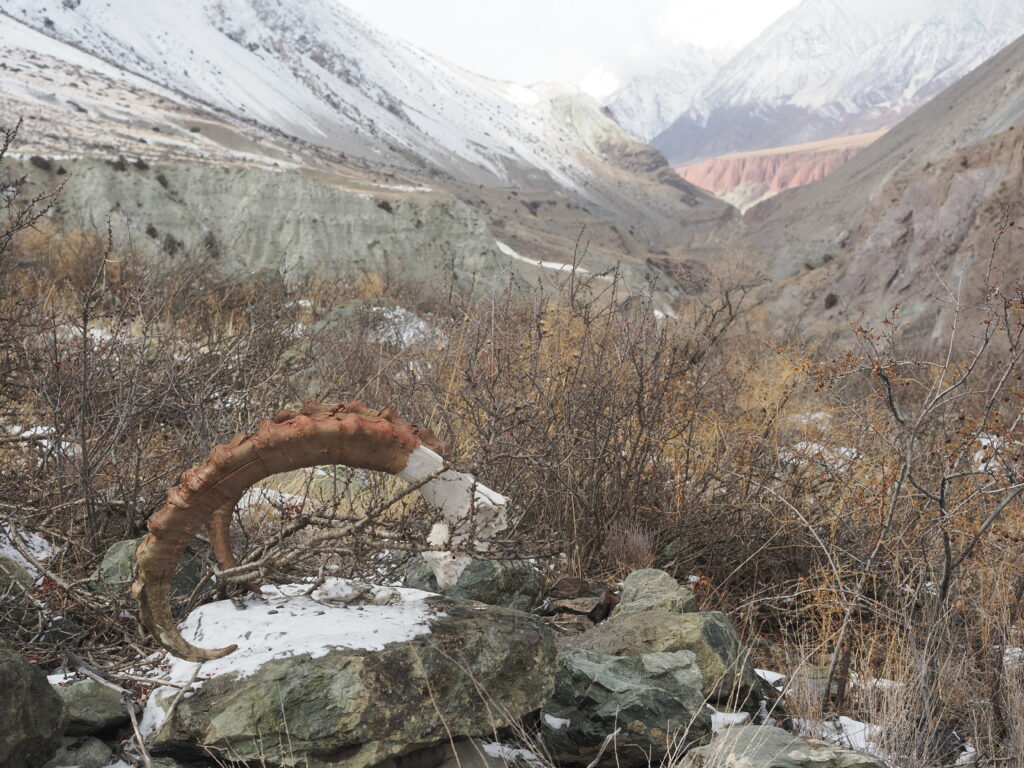

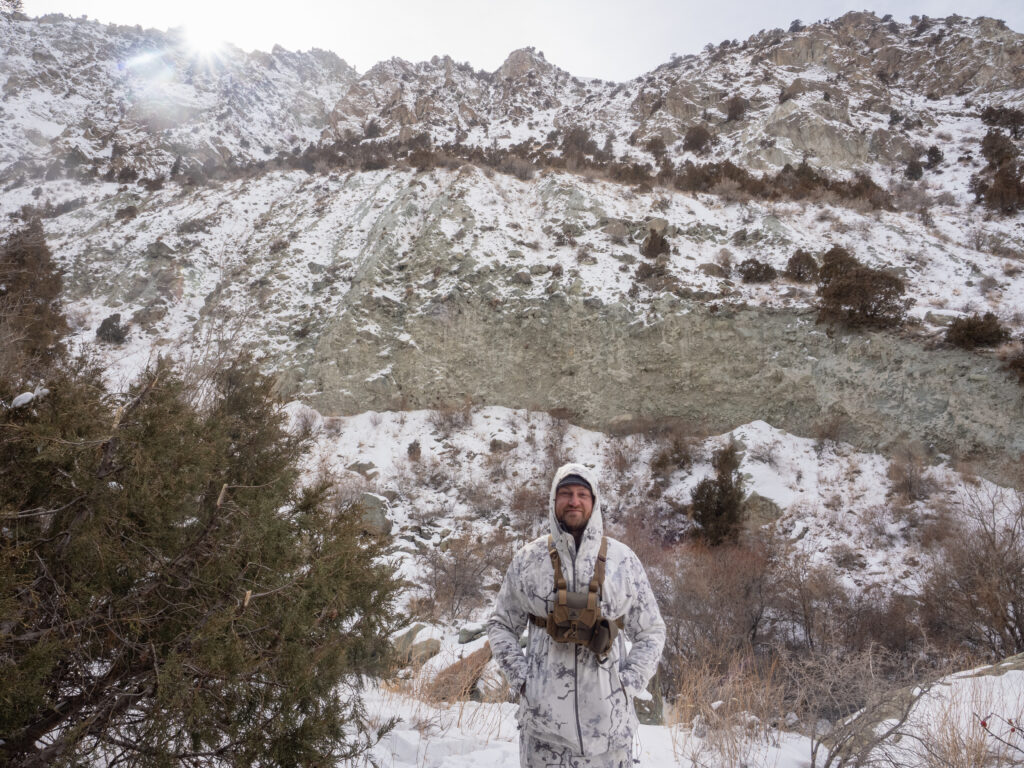
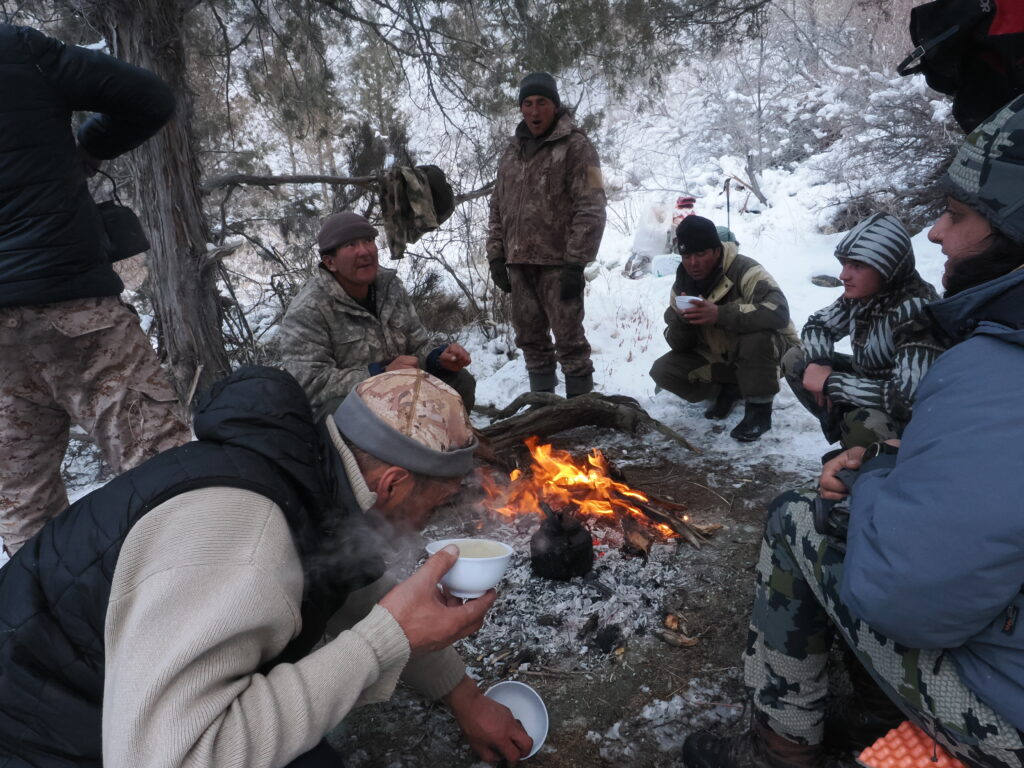
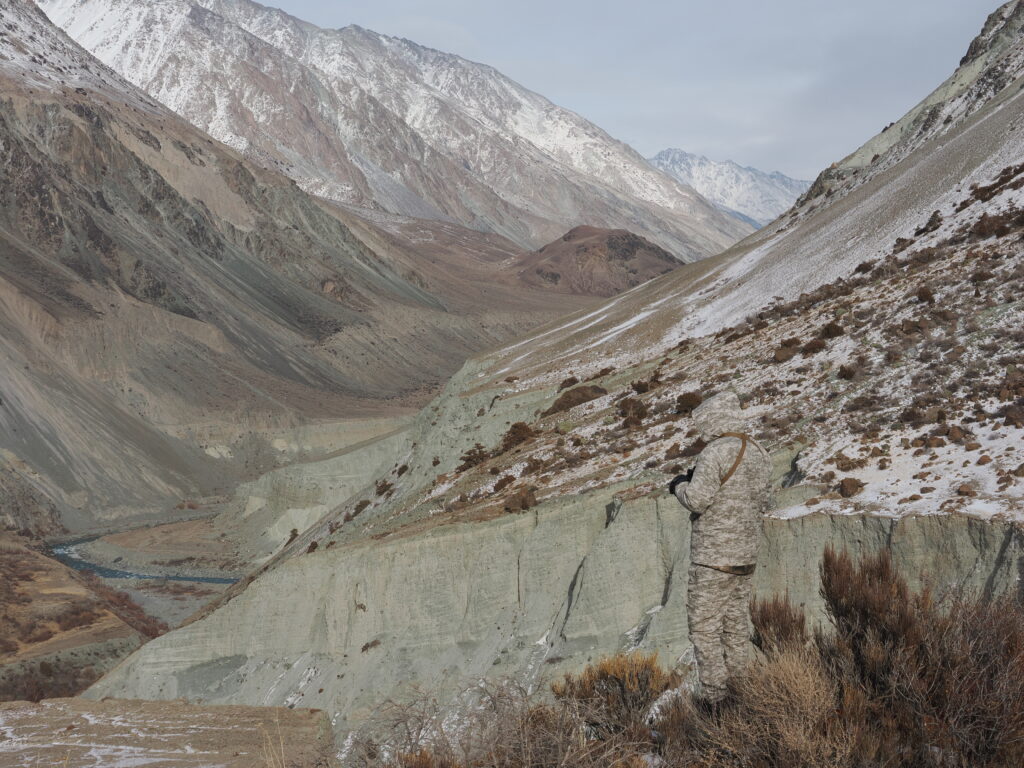
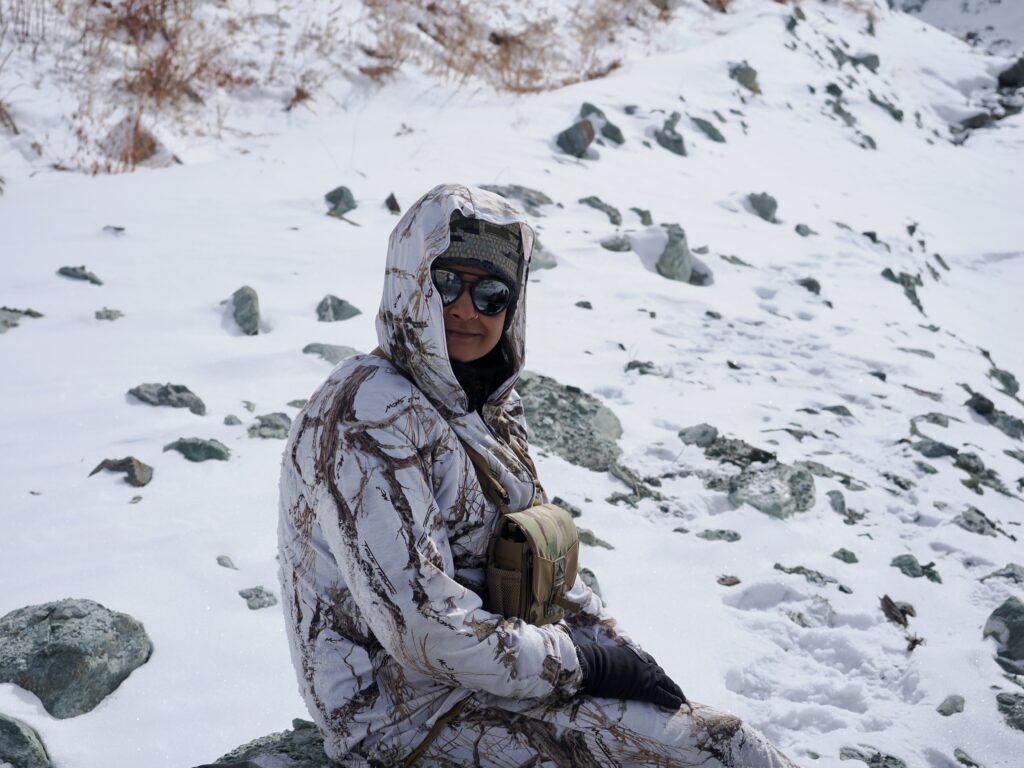
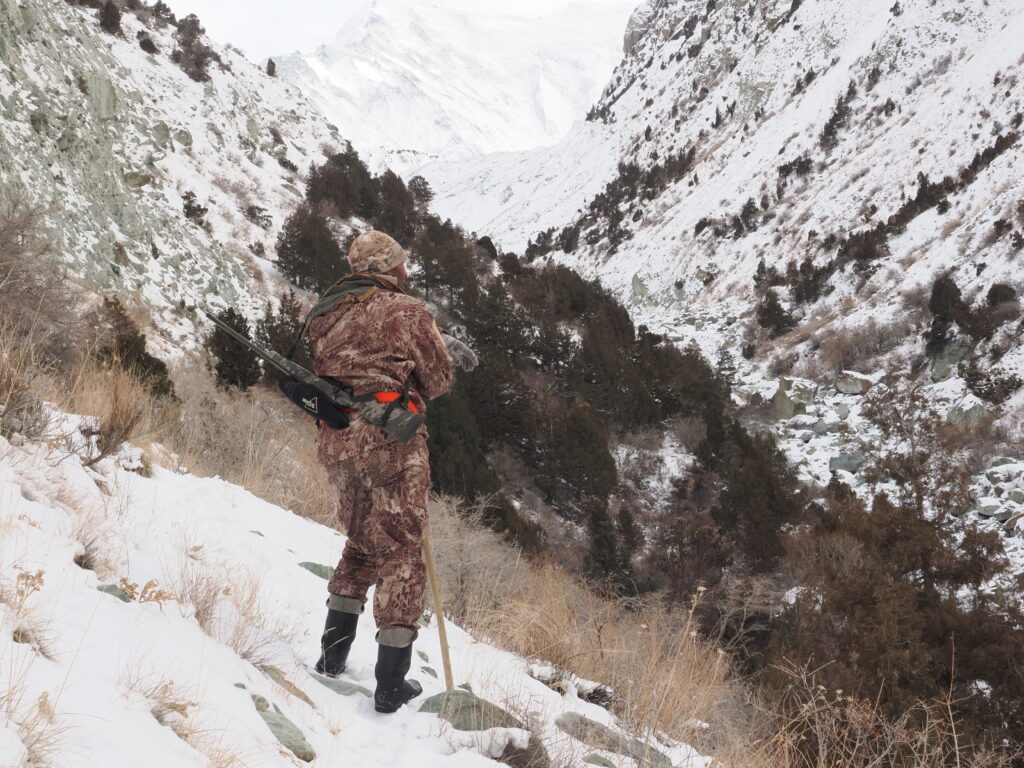
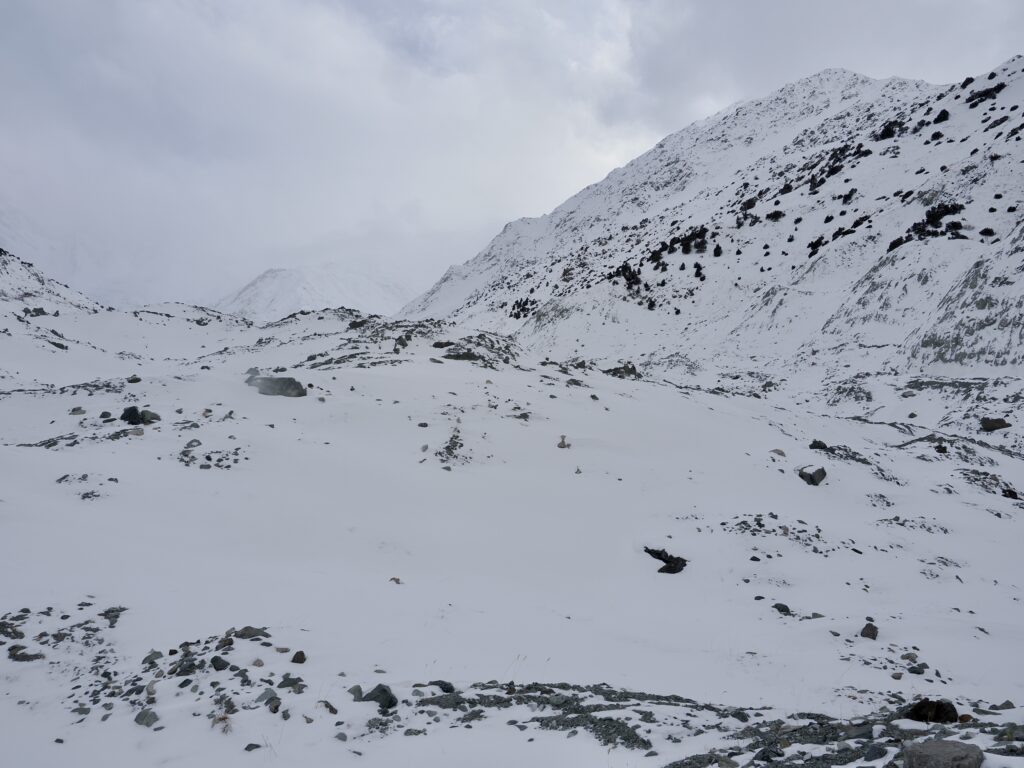
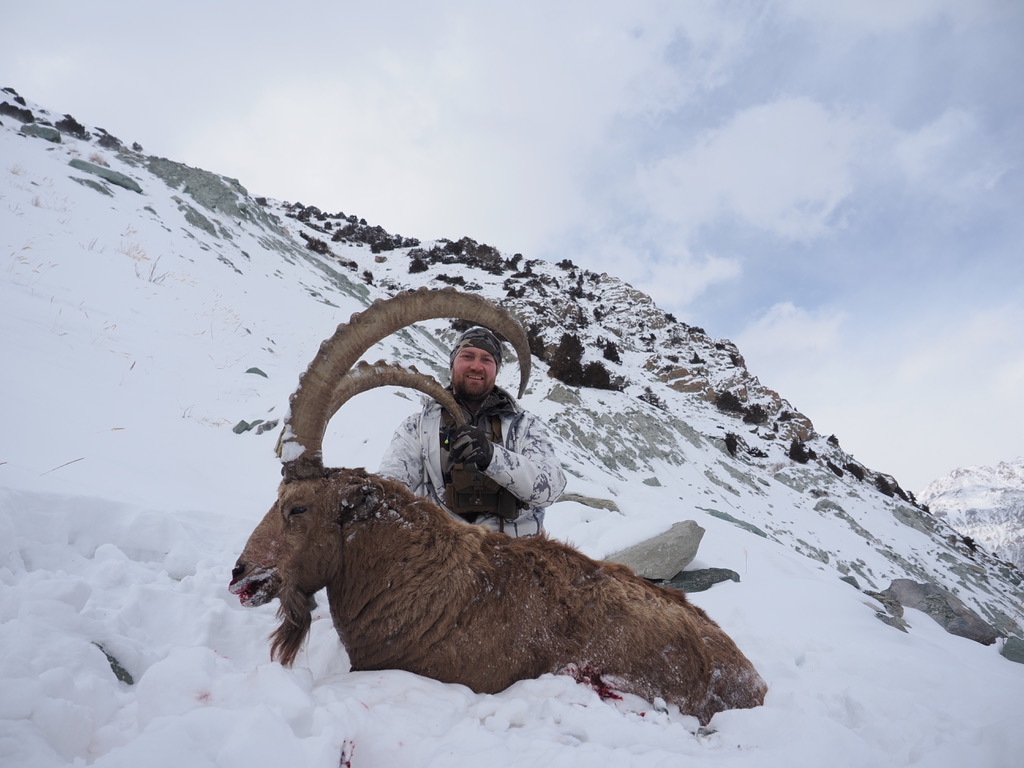

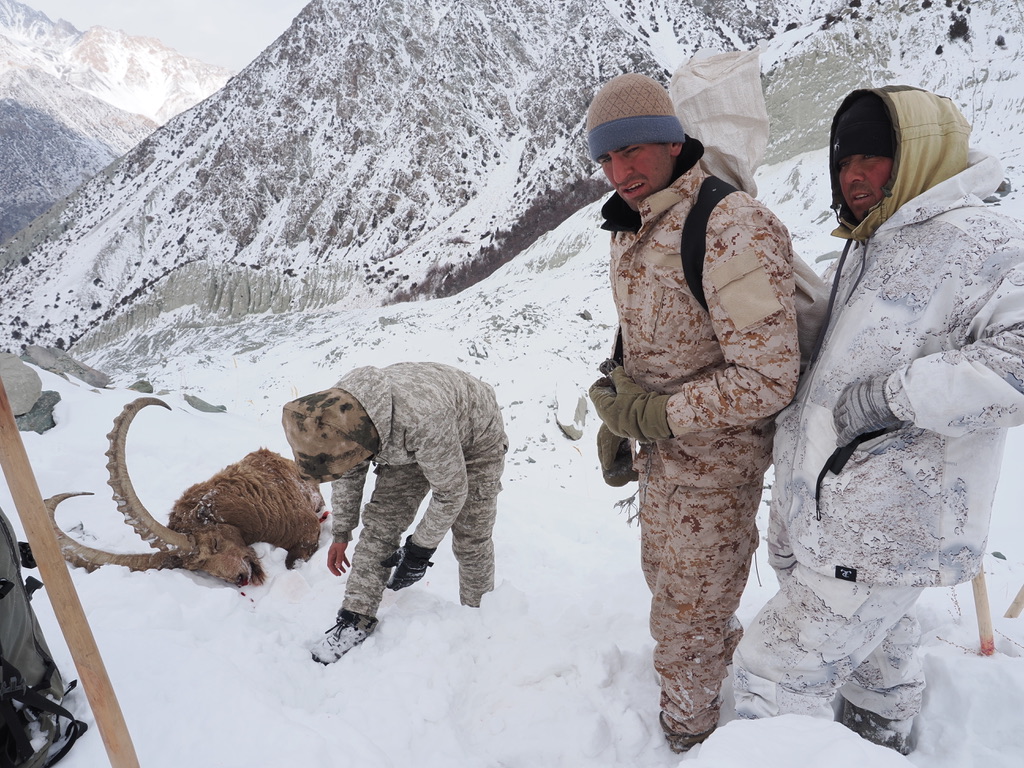
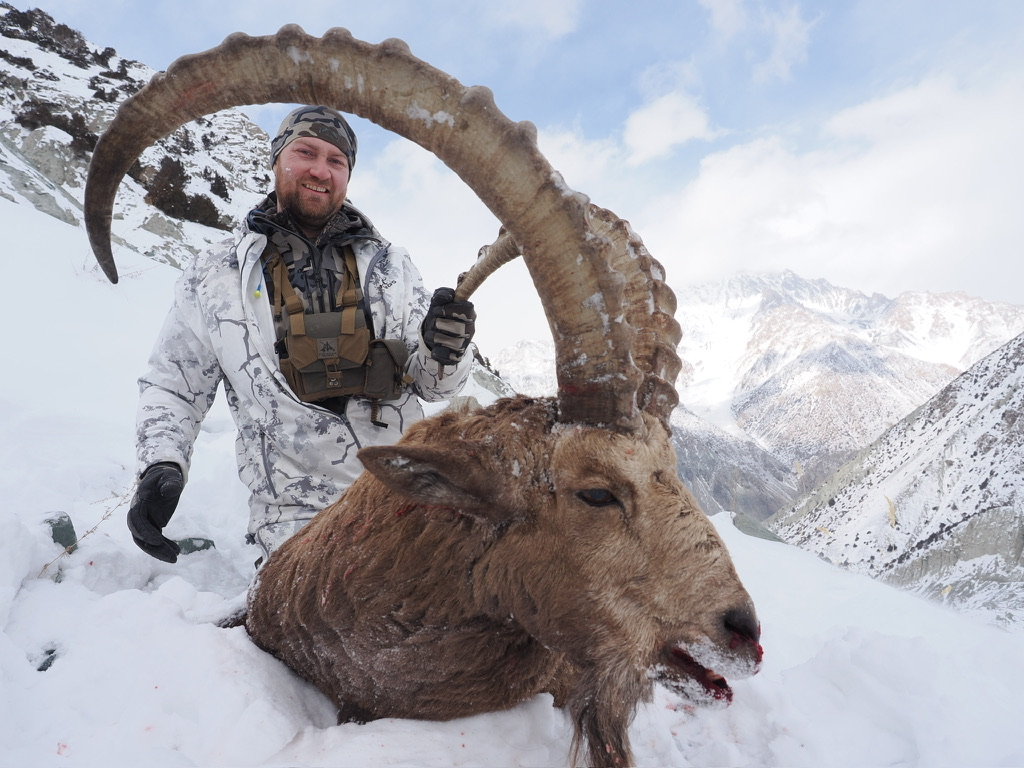
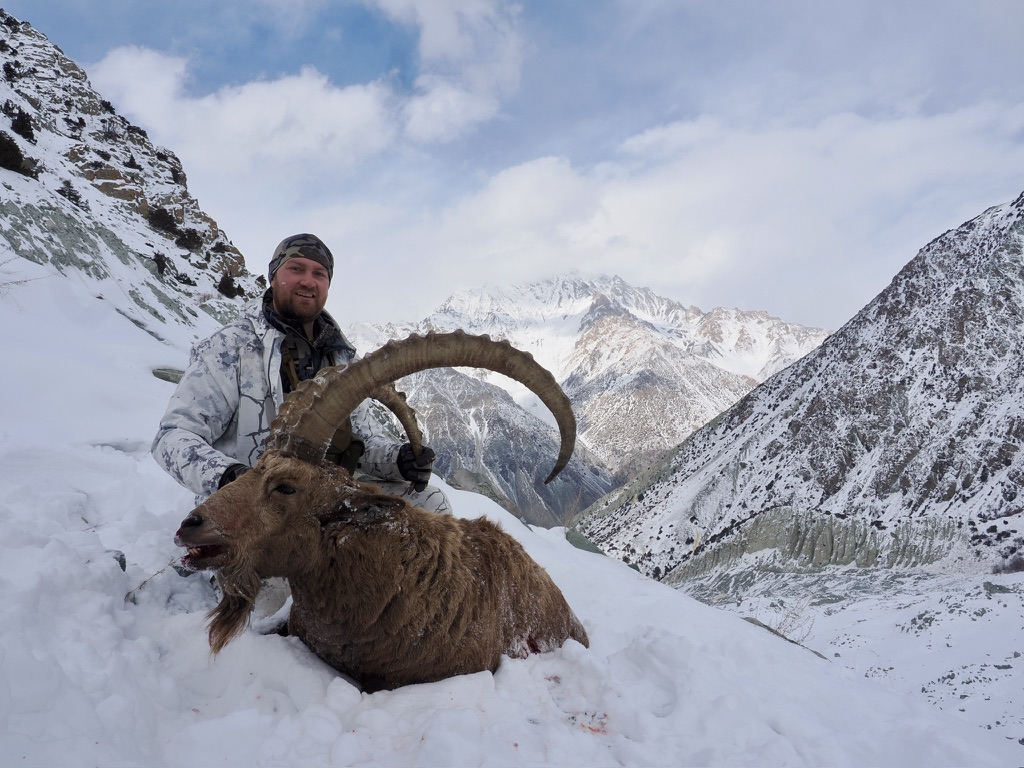







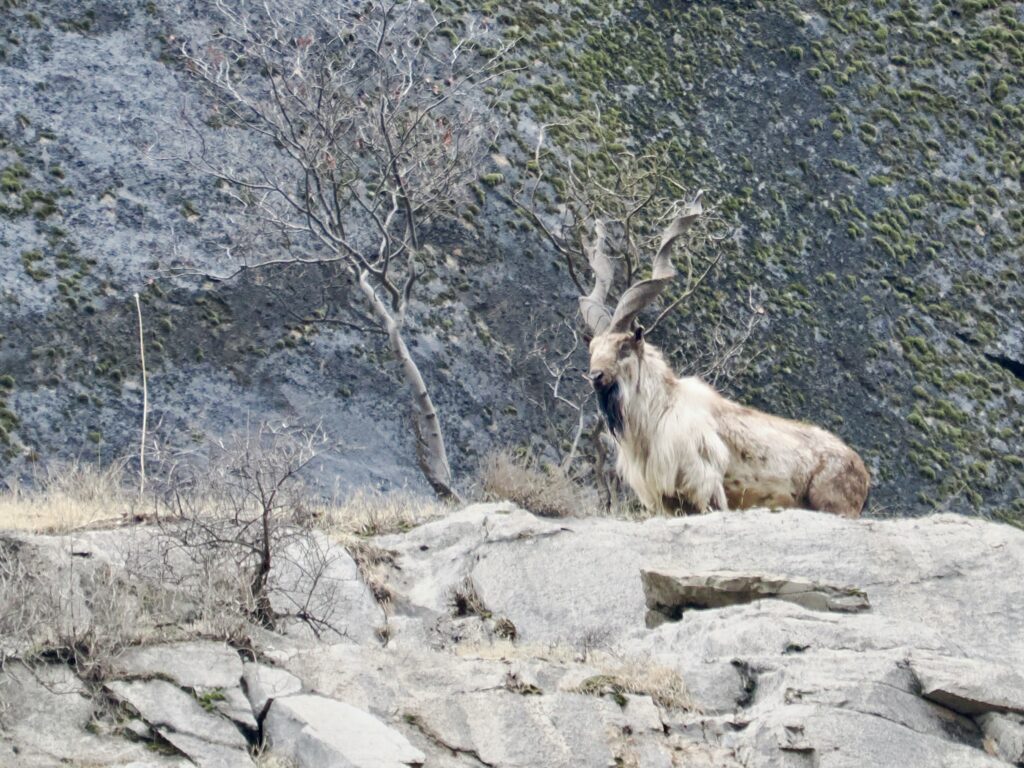
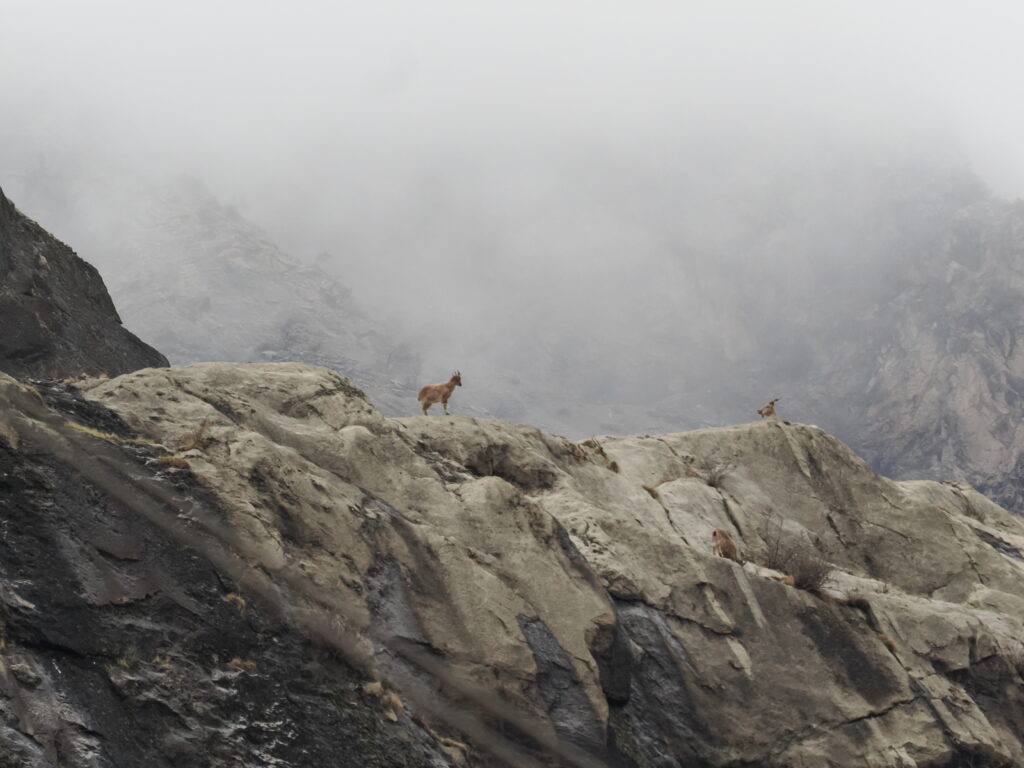
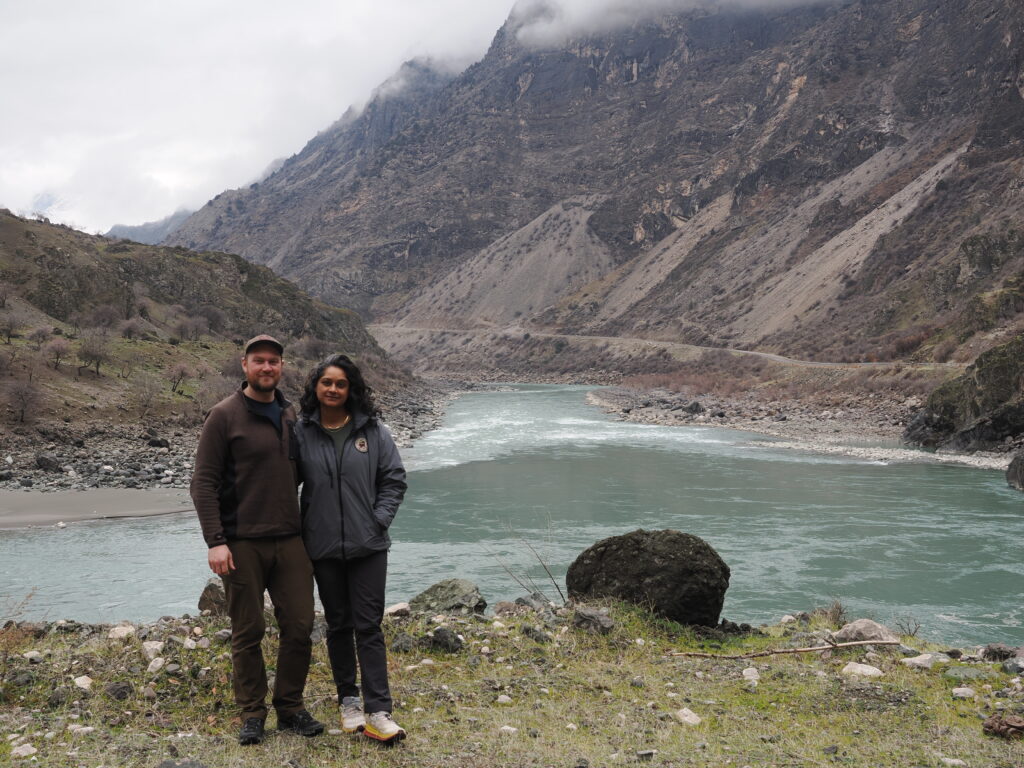
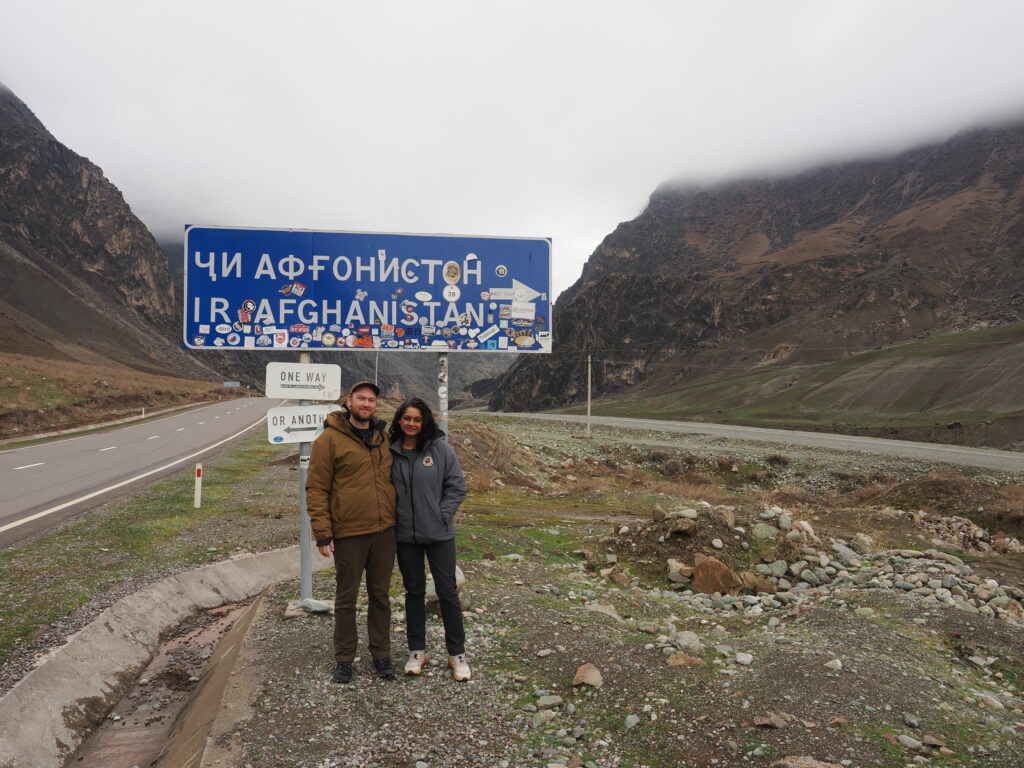
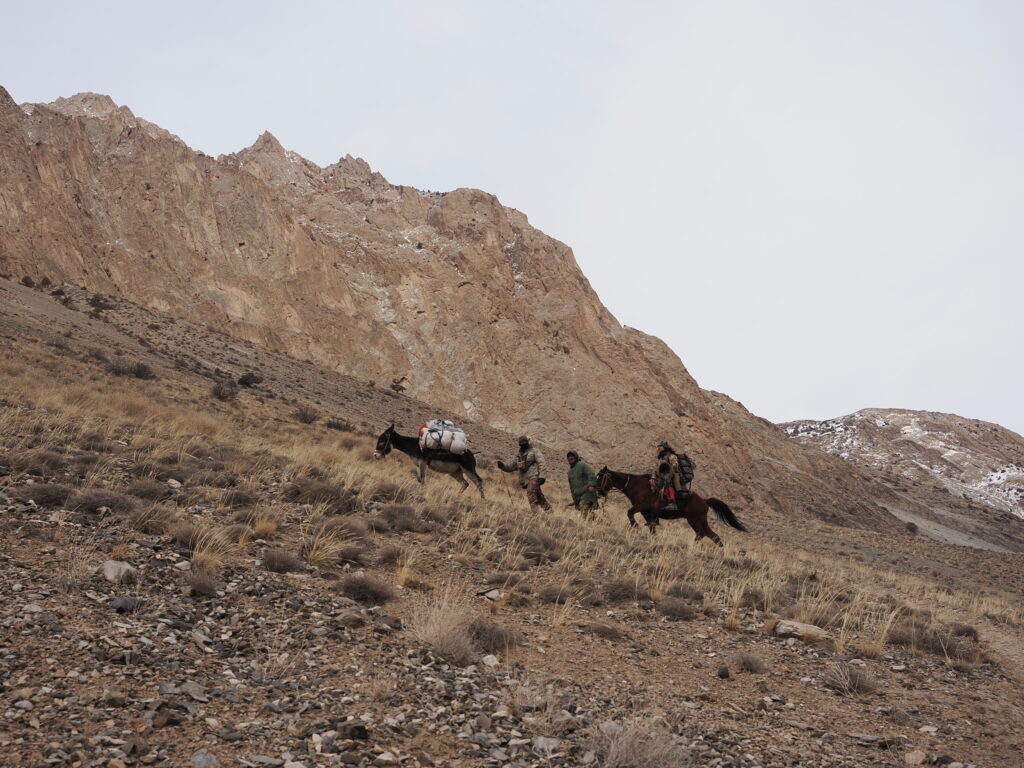

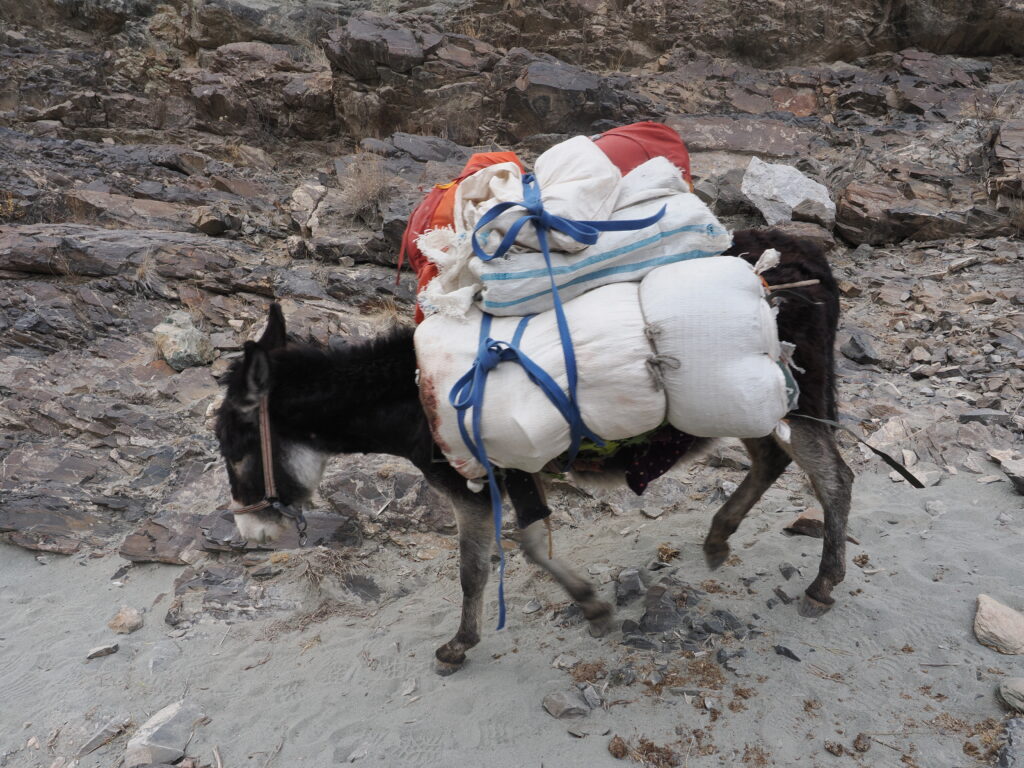
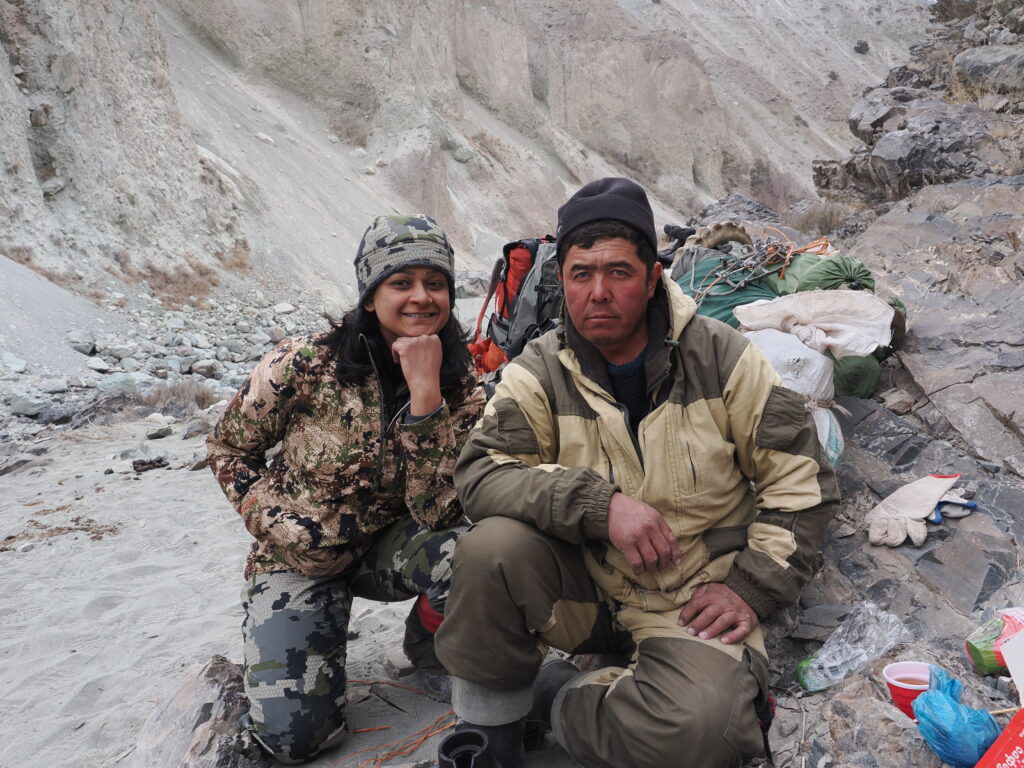
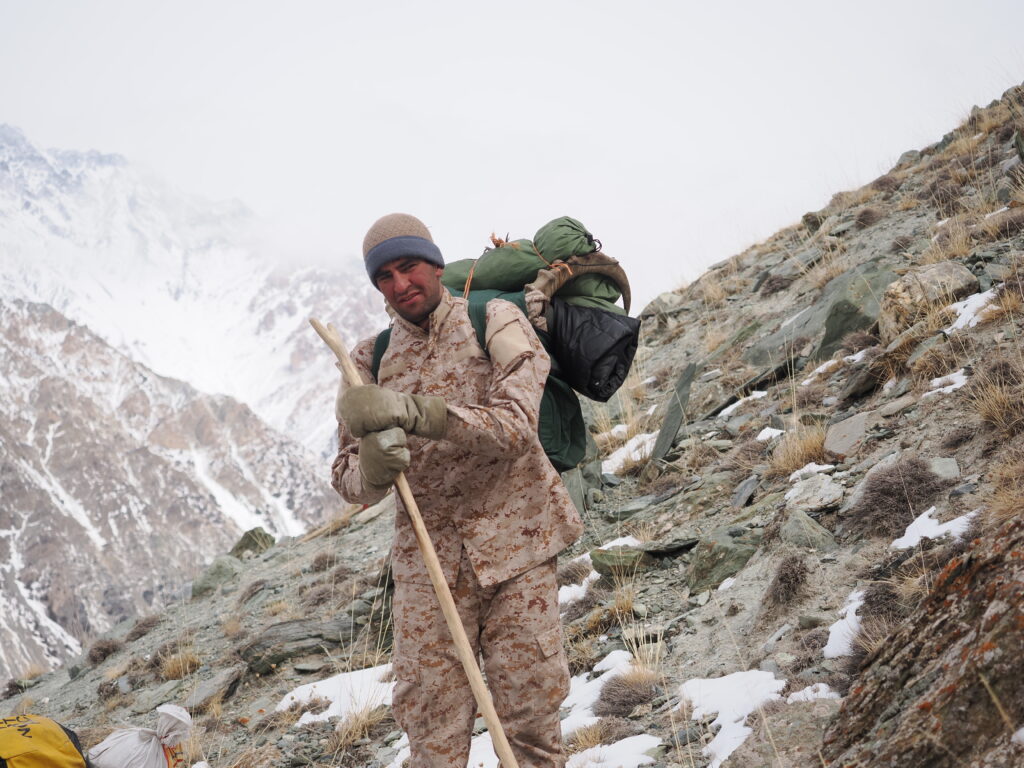
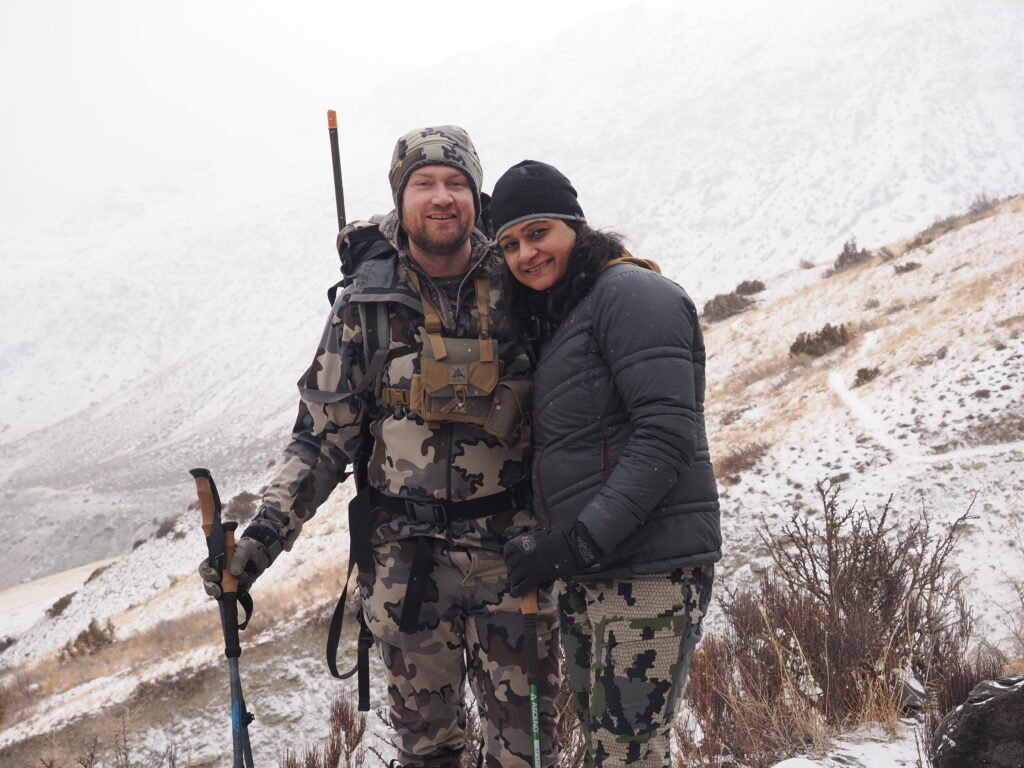
Wow. What an adventure! I picture 8 in that vehicle and can only laugh! Thanks for sharing this story.
Glad you enjoyed it!
I also enjoyed the transportation adventures, although very nerve-wracking just reading it. The pictures were amazing and your story was captivating. Thank you so much for sharing!
Thanks for reading, glad you enjoyed the story. I’m really glad we had a driver the whole time we were there. People in general drive so crazy I don’t think we would have survived if we had to drive ourselves! The off-road driving was far less scary then driving on the roads/highways.
A lot of people have asked how ibex tastes. It was actually quite good, but pretty tough (I think it has a lot more to do with how they cook meat in general, which is almost always tough). The flavor was great. Between the two of us and the guides we probably ate close to half the animal before we got back to the village, and had another meal there. The remainder of the meat was quickly used and enjoyed by the others in the village.
Thanks for sharing a fantastic story, Alex! What an incredible experience! Thinking back to our trip to Kodiak, I can empathize with that feeling after missing your first opportunity. I’ll never forget re-zeroing on the mountain house bag at our spike camp and the sinking, but yet somewhat comforting, feeling of realizing I didn’t even have a chance.
Keep ’em coming!
Glad you got a chance to read it! it was very cool experience for sure; it was unfortunate with the miss, but similar to your experience on Kodiak, learning the miss was from a solvable equipment issue gave confidence back in my shooting abilities moving forward.
On a side note, when we recovered my ibex, one of our guides pointed out the each horn had a fresh chip missing from it on the front, both in nearly the same spot almost perfectly in line with each other. His thought was that I grazed the horns with the shot the day before (I definitely shot about that height over his’ back), and I ended up shooting the same one I missed. I will never know for sure if that’s true, but it sure seems like it’s possible!
A heartfelt story of one of the most extraordinary trips of my life. There was laughter, tears, hardship, resilience, kindness and the realization that if you want true life experiences then you have to be willing to be uncomfortable. I am grateful for our guides for taking such a good care of us. Thank you for choosing me as your hunting partner and believing in me when I was doubting my ability. Congratulations again on your successful once (or not 😉) in a lifetime ibex hunt. I love you my mountain man.
Wow! You guys are sure adventurous! One You will always remember. I had to laugh that he had to hot wire the car every time he had to start it. And put a rock under tire so it wouldn’t roll! Glad you are safe and back home. Thanks for the story! Love you guys
Absolutely incredible !!!
I am so thankful that you two have experienced this. What an amazing adventure ! I am also very thankful you are willing to write such wildly exciting , descriptive , well written stories and share them! Thank you for this ! The photographs are truly amazing , as are the mountain folks you met. I can not fathom their toughness and ability. I’m also thrilled at the wildlife you encountered! Great story !!!